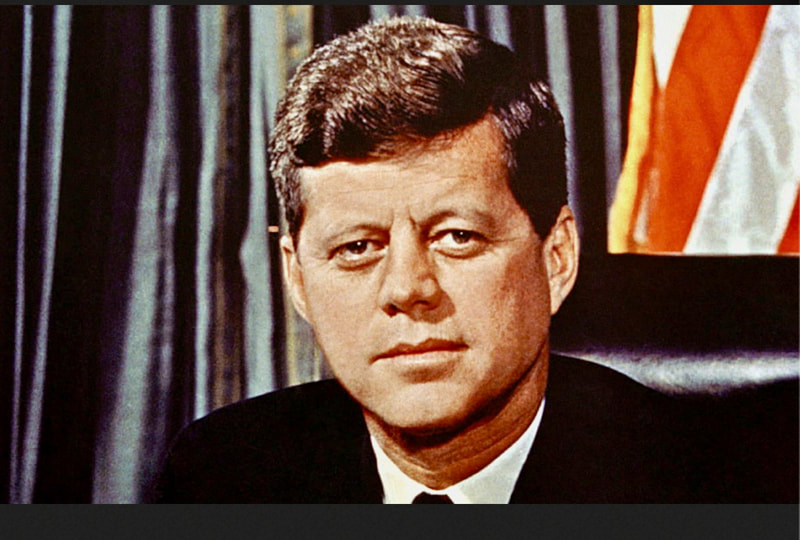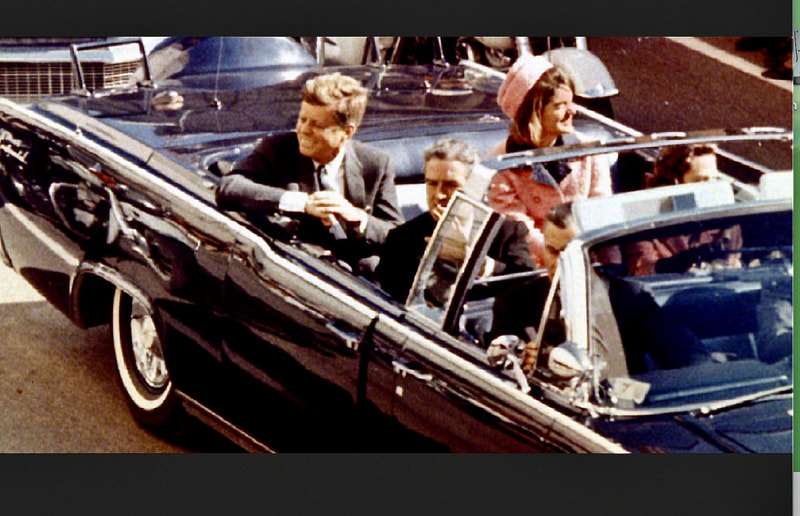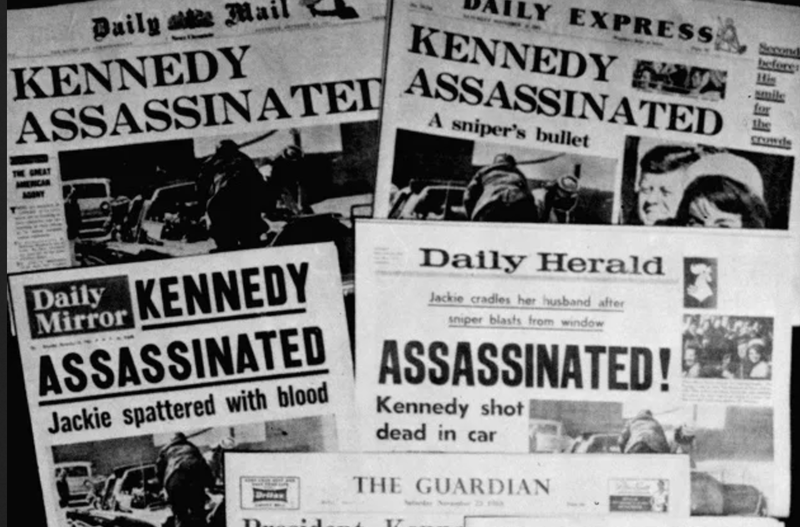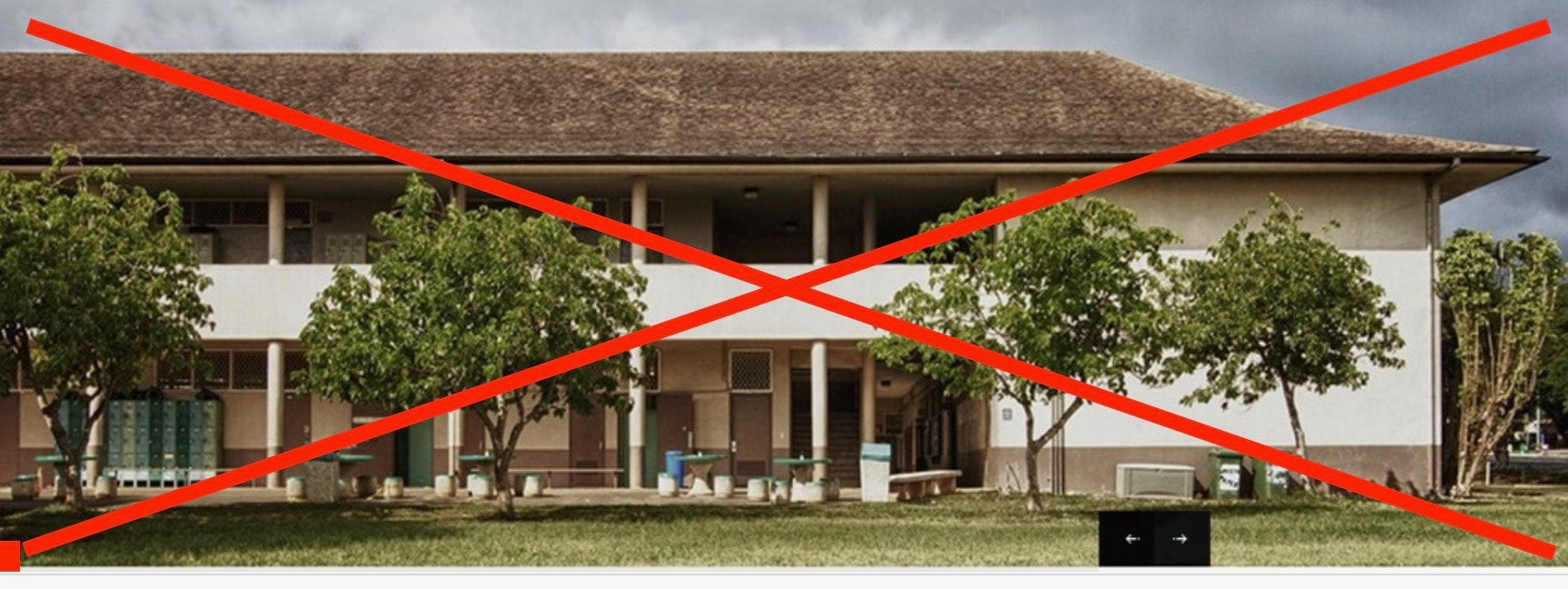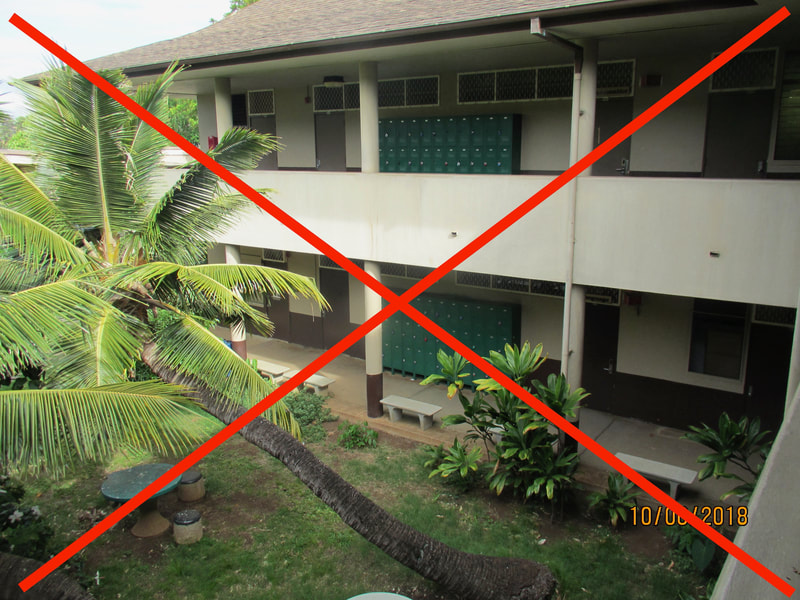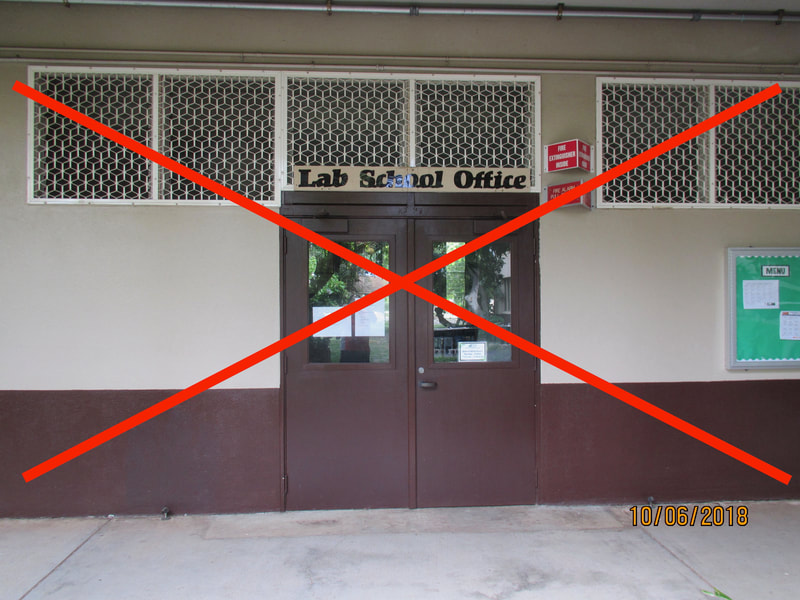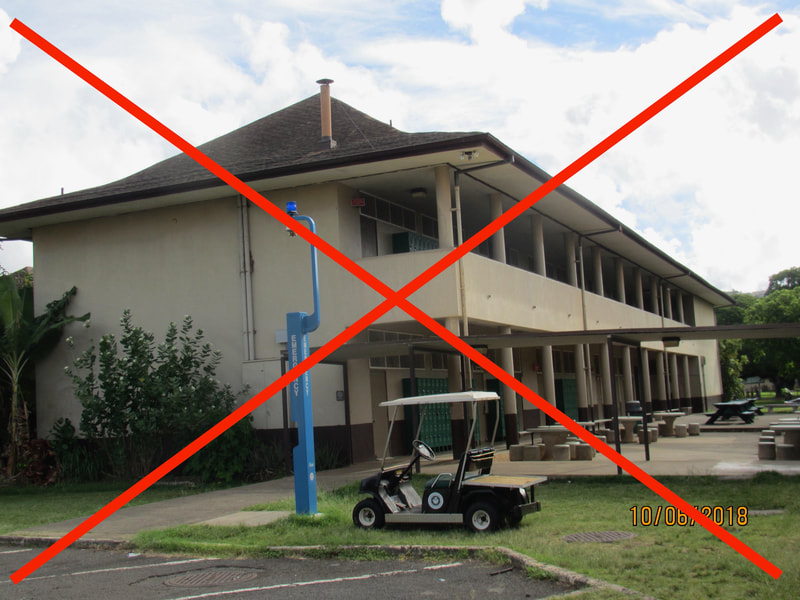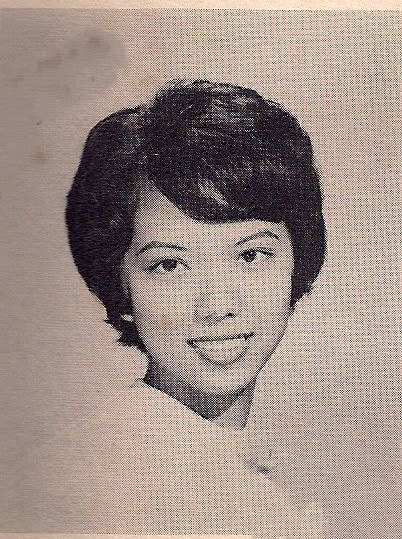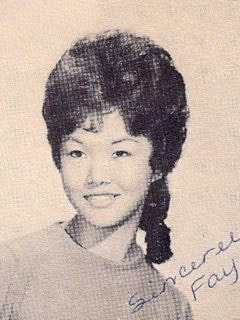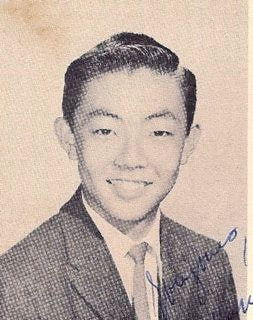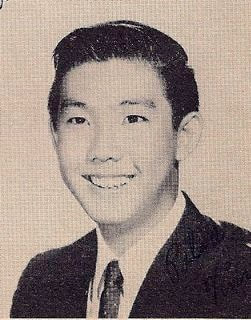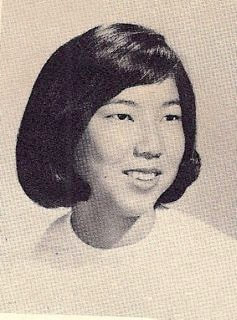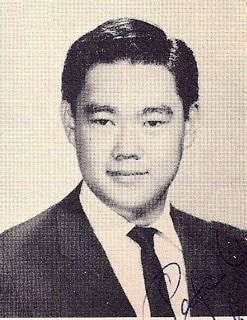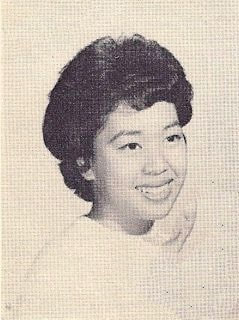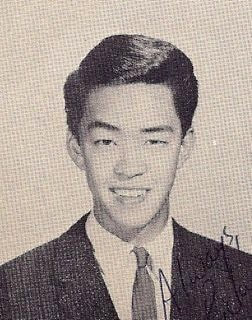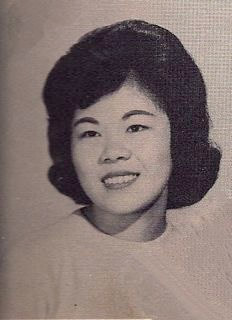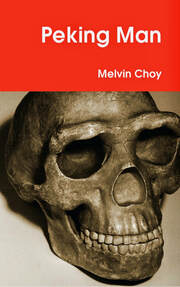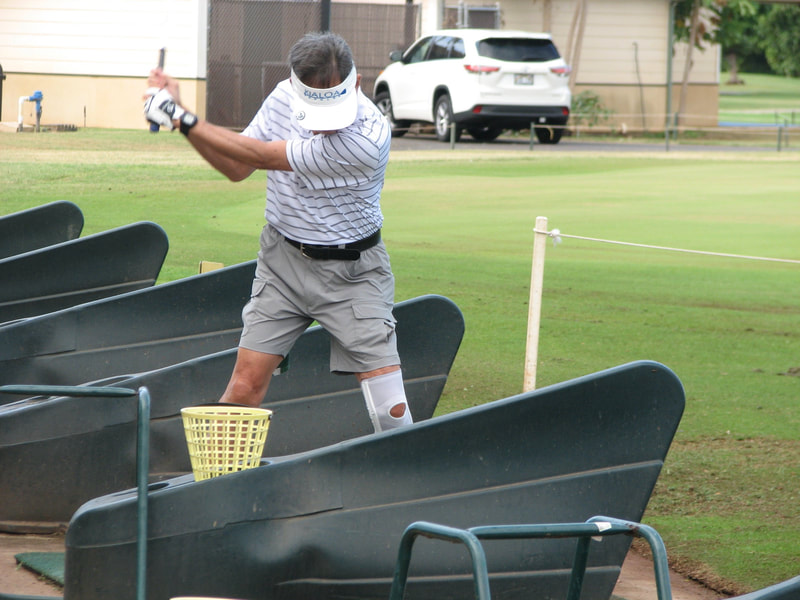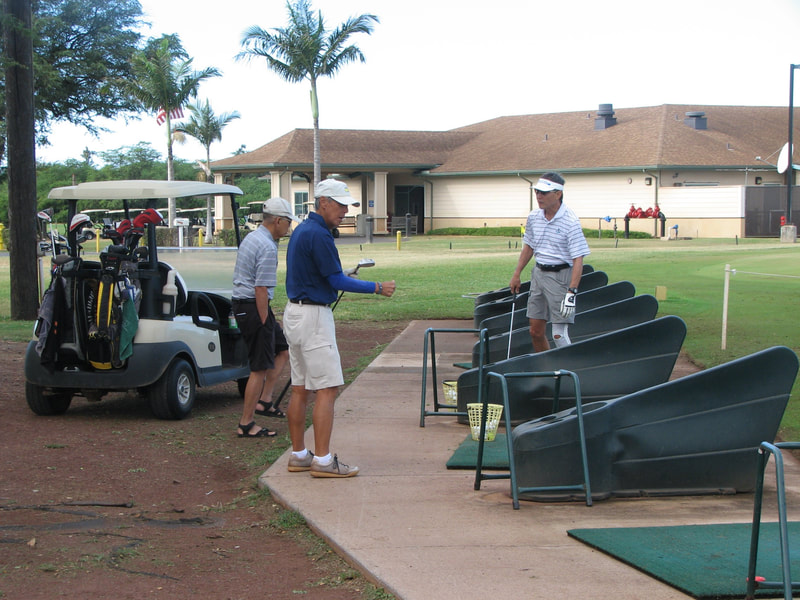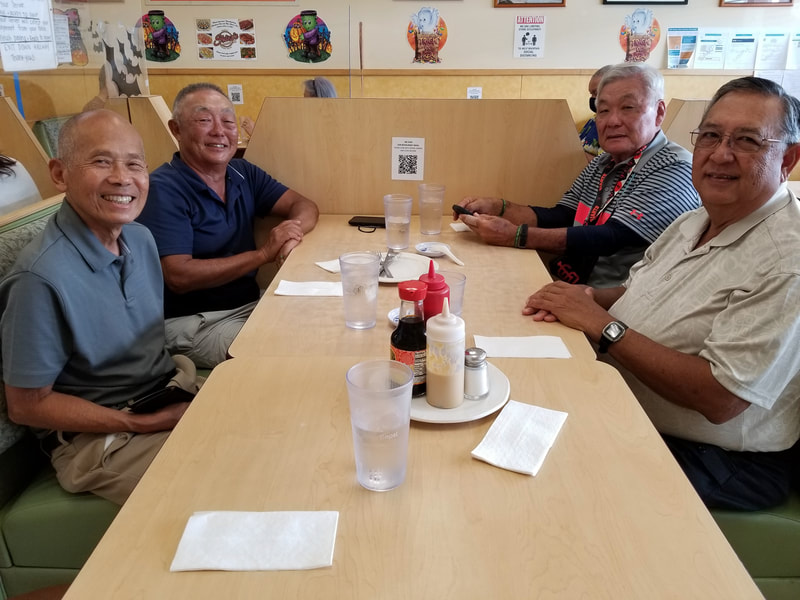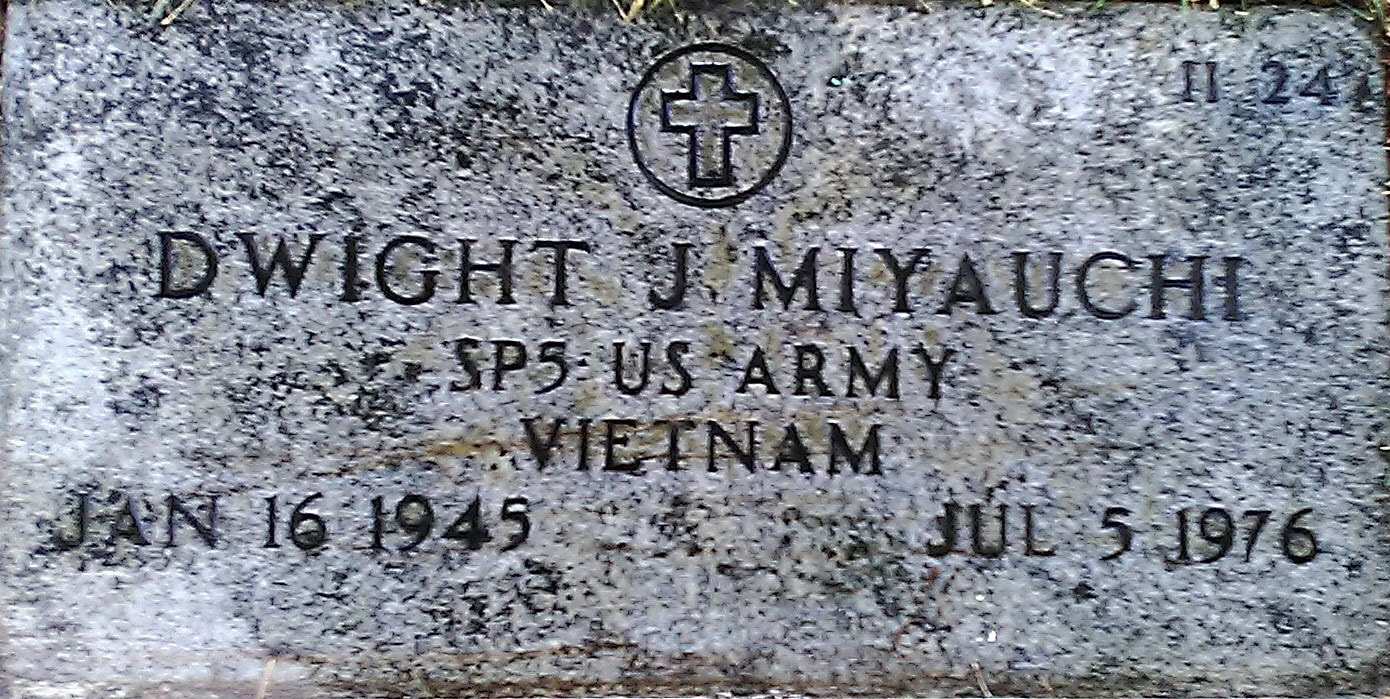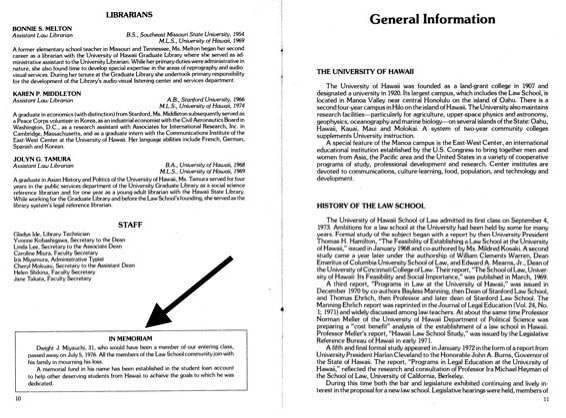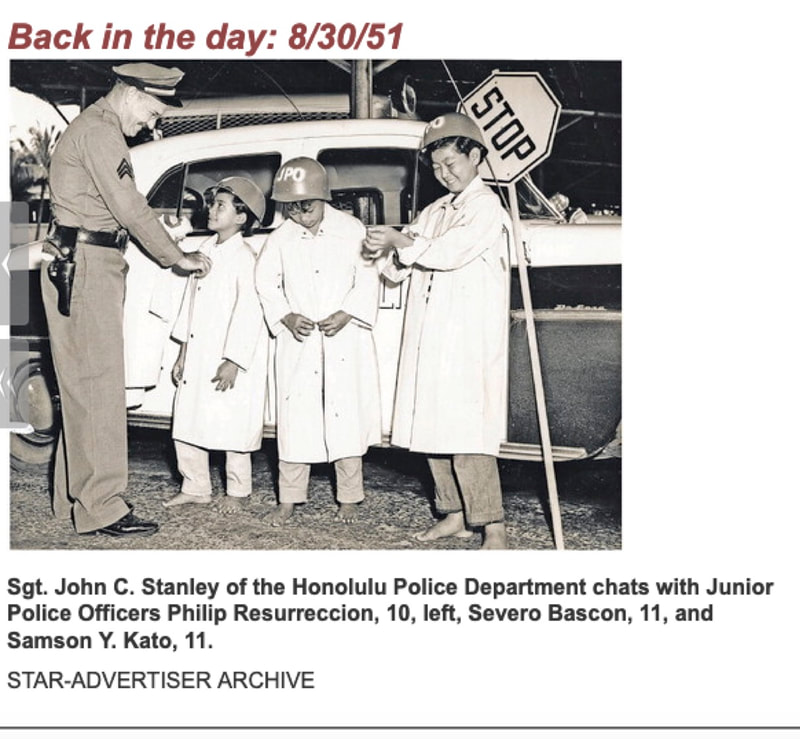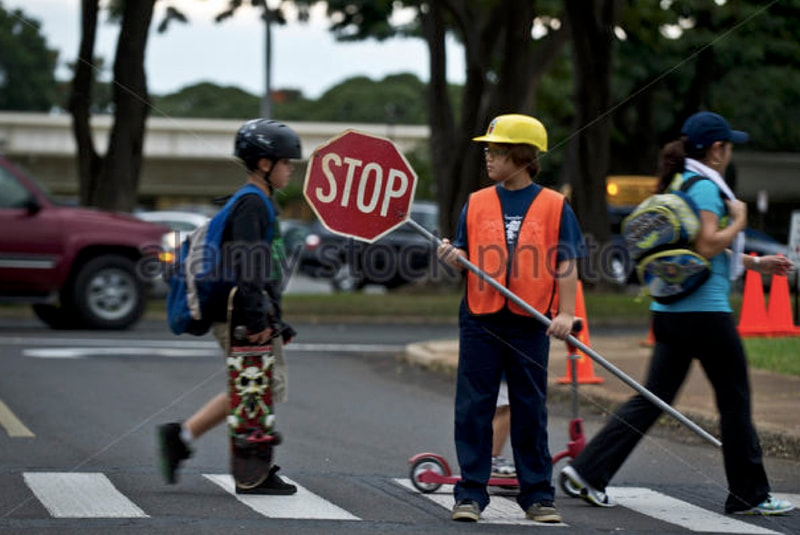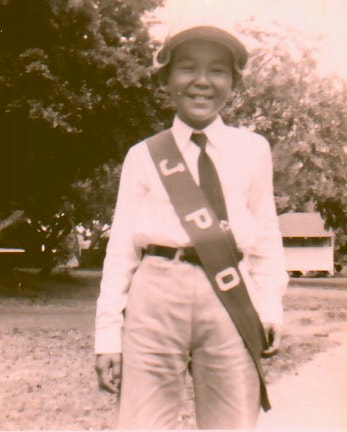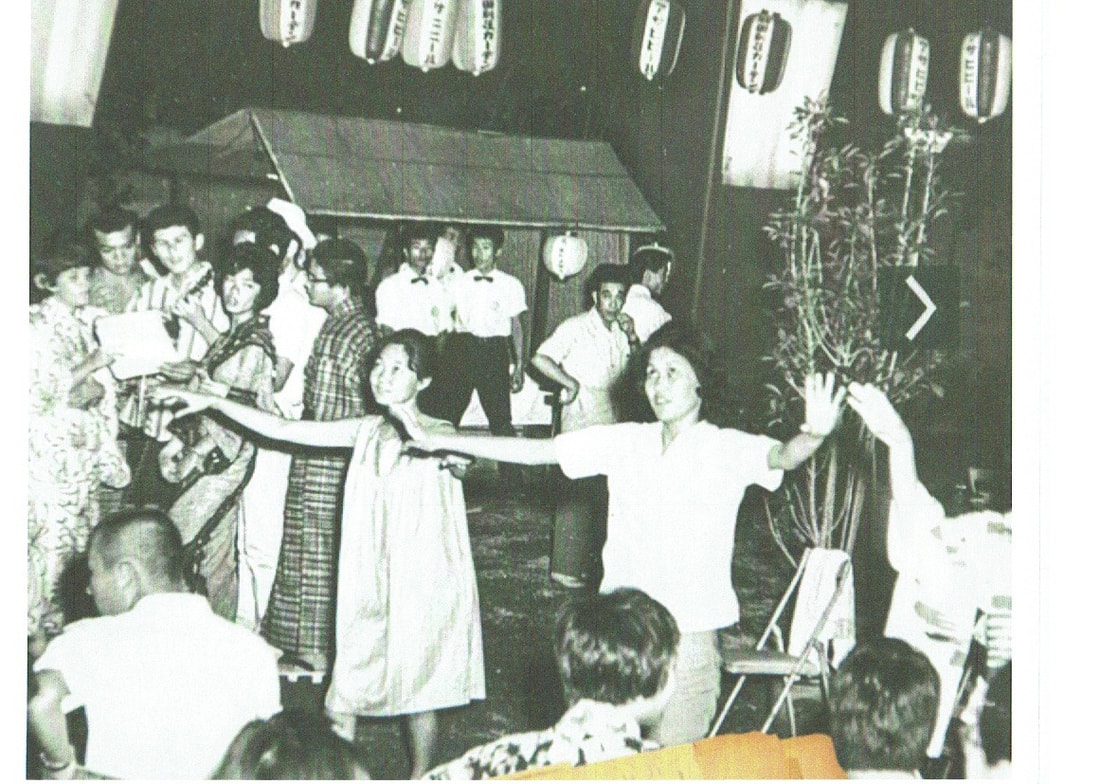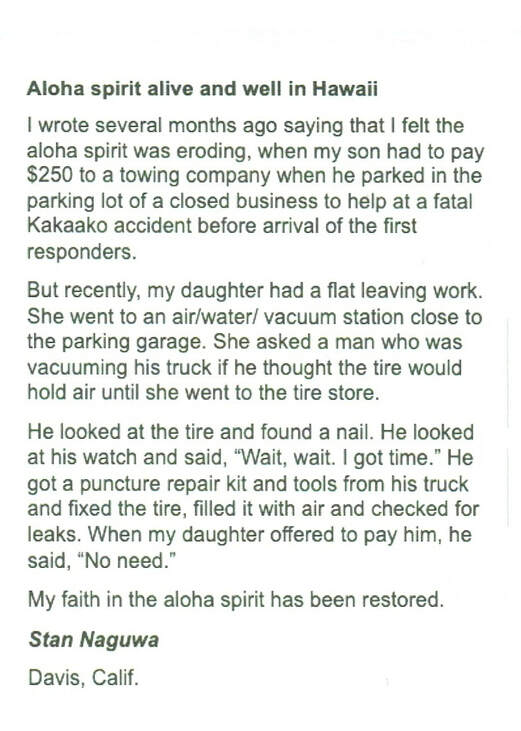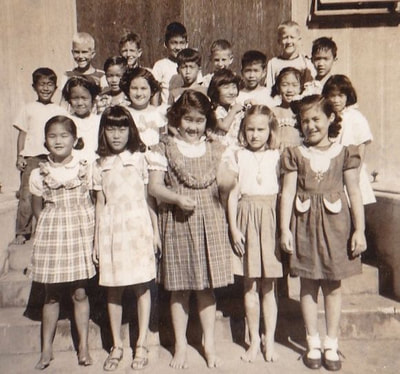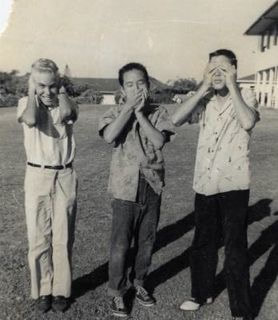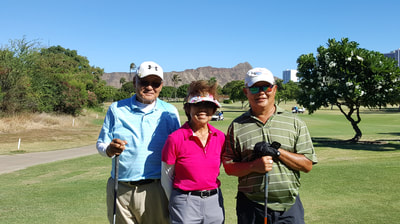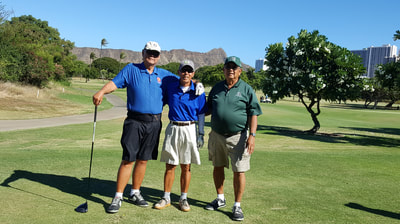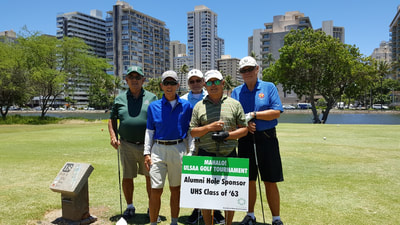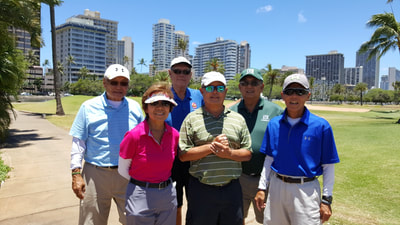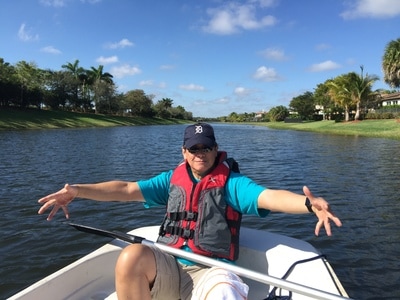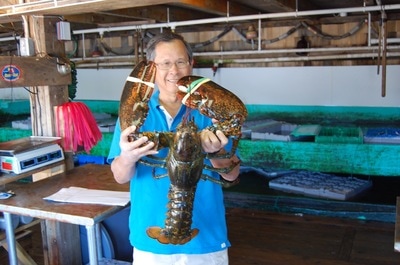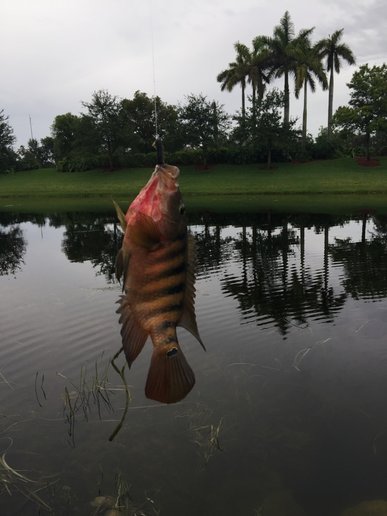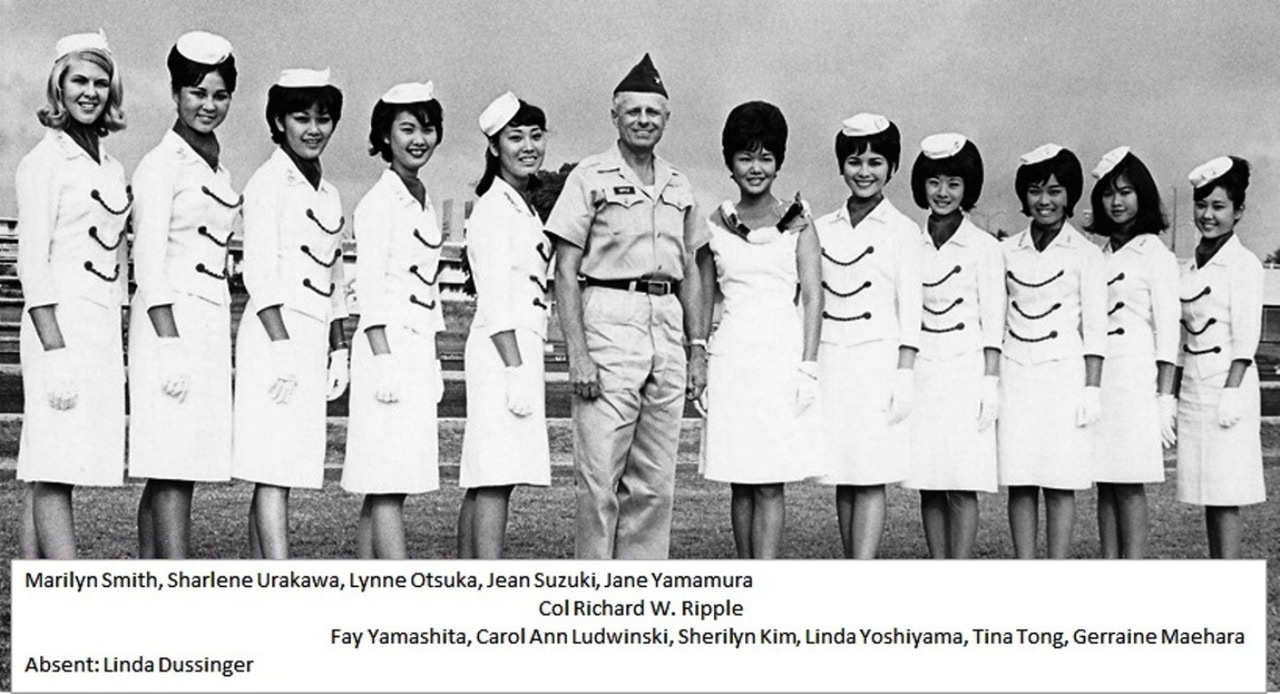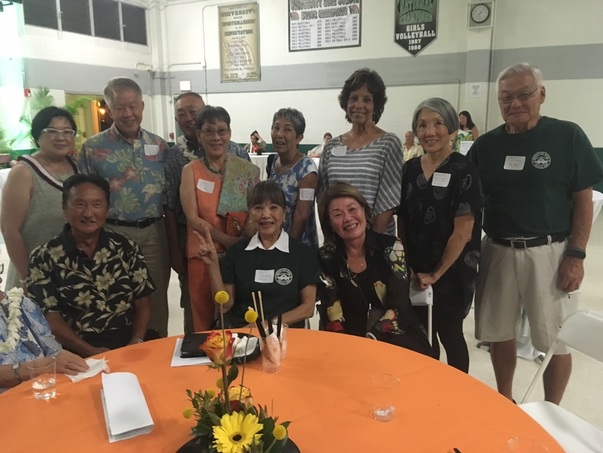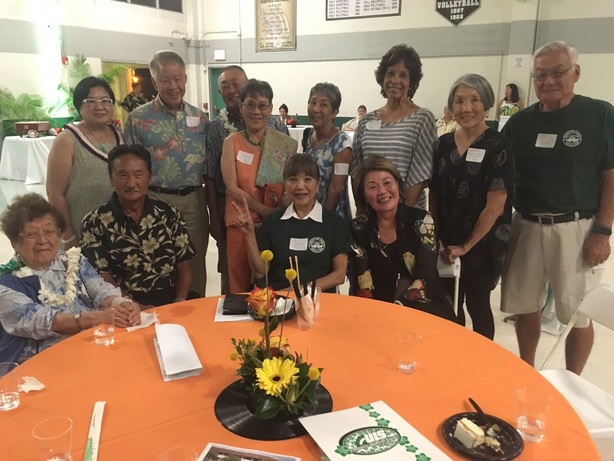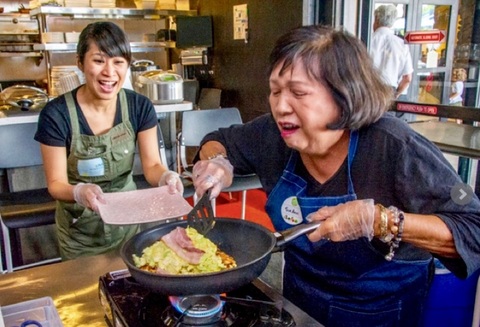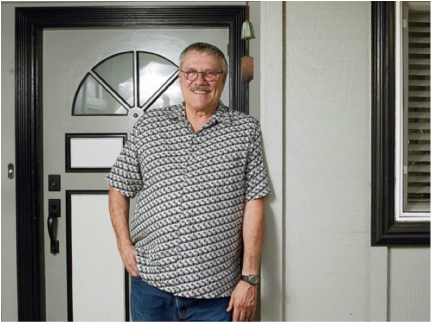REMEMBER NOVEMBER 22, 1963?
November 22, 1963 and July 21, 1969. Are these dates familiar to you? President John F. Kennedy was assassinated in Dallas, Texas on November 22, 1963 and Neil Armstrong took “one step for mankind” on the surface of the moon on July 21,1969. Somehow these dates become etched in our memory and we can vividly recall where we were and what we were doing on these dates. Why is that?
An article in Psychology Today, the magazine, described “flashbulb memory” as one of the reasons why we can remember where we were during the occurrence of specific events, They defined this type of memory as “a distinctive type of autobiographical memory associated with personally noteworthy and memorable public events.”
During the weekly regularly scheduled Zoom call on Wednesday, November 22, 2023, Tahi Mottl-Reynolds, all the way from the East Coast, posed this question: “Where were you when JFK was assassinated 60 years ago today?”
I have not seen a response to a question like this since we asked many years ago, “were you a Junior Police Officer (JPO)” (on our website at http://uhs63.weebly.com/whats-new.html - after the COVID mask contest story). Responses came during the Zoom session and via email response. With their permission, responses are reprinted below because they provide a picture what we felt and were doing on November 22, 1963.
If after reading this, you want to add your personal anecdote, send a email to [email protected].
"I have the flashbulb event every November 22. I was waiting for my psych class to begin at Ohio University. We waited for a few minutes when the professor's grad assistant came in to tell us that President Kennedy had been shot and that classes were cancelled. A concert by the Four Preps that night was also cancelled. I was in the dorm lobby two nights later when I heard yelling coming from the TV room that someone just shot Lee Harvey Oswald." (Submitted by Diane (Yanagisako) Fujikami
“I was in Mrs. Glick’s freshman English class at UH. One of the secretaries rushed in and whispered something to Mrs Glick. They whispered back and forth before Mrs. Glick stood up and told us about President Kennedy. She told us that class was cancelled. I remember that she was crying. (Submitted by James MacDonald)
“Wow! I think I was in my friend’s (Jim MacDonald) car when we heard the shocking & sad news of the assassination.” (Submitted by Linda Mae Onomoto)
“We were in class at UH. We thought JFK represented hope and optimism vs. the same-o, same-o politician. He was young and Jackie was so very different than other First Ladies. When the news broke, classes were cancelled and we felt lost just sitting around Sinclair Library. Vern, Roy Kanno, Jerry Park, Walter Fong and I, spent the afternoon at Steve Murakami’s house listening to the news. Somber is a good description of the days to follow.” (Submitted by John Chong)
“…I was at UH, walking from a class at Keller Hall up the stairs to that circular road that was in the middle of campus at that time. Also remember going home and watching the black-and-white videotape news clip (just flown in from the mainland) of Lee Harvey Oswald being shot by Jack Ruby.” (Submitted by Ricky AuHoy)
“…I was at UH about to enter class when I hear other students listening on the radio and wonder if we were going to war.” (Submitted by Vincent Lee)
“My shaggy dog story: Trying new stuff at the uh, I tried out & became a UH cheerleader…And prob when I shared a soda at a game (sure, sure, kissing disease), I got mono! Hospitalized in isolation in high rise Kaiser hospital — overlooking Ala Moana Park — I was watching the UHS all-school field day in the park that morning when the Kennedy assassination came on the TV in my hospital room.” (Submitted by Tahi Mottl-Reynolds)
“And on that day in Nov 1963 I was up from Cornell in Sandee’s dorm at Syracuse waiting for her to come down when the news came through. Can’t much remember what we did that somber weekend other than it was good to get through it together.” (Submitted by Nate Wong)
“Okay, apparently I was sitting in the grocery store cart with Mom shopping in Manoa. She and others gathered around someone with a radio. I was 3.” (Submitted by Monica Chun)
“I was sitting in mat dorm room at the University of Missouri getting. ready to go to my ROTC class. When I got to the class, all of the instructors who were active duty sergeants and officers were highly agitated because they thought we were on the verge of going to war.” (Submitted by Miles Nakashima)
“In answer to Tahi’s inquiry, like Miles I was in my dorm room at Butler with my dorm mate when our friends came storming in with the news. We were stunned and feeling numb. We later learned there was to be a vigil downtown (Indianapolis) so we caught a bus to join the somber crowd. It was a time of reflection. Two years later my roommate joined the Peace Corps in South America to carry on Kennedy’s legacy.” (Submitted by Carolyn (Watanabe) Adler)
I wish Ann Reid and Kari O’Connor were here so they could respond to the question. I remember them being enthusiastic and vocal. supporters of JFK during our senior year — long before I even thought of supporting candidates in an election.
An article in Psychology Today, the magazine, described “flashbulb memory” as one of the reasons why we can remember where we were during the occurrence of specific events, They defined this type of memory as “a distinctive type of autobiographical memory associated with personally noteworthy and memorable public events.”
During the weekly regularly scheduled Zoom call on Wednesday, November 22, 2023, Tahi Mottl-Reynolds, all the way from the East Coast, posed this question: “Where were you when JFK was assassinated 60 years ago today?”
I have not seen a response to a question like this since we asked many years ago, “were you a Junior Police Officer (JPO)” (on our website at http://uhs63.weebly.com/whats-new.html - after the COVID mask contest story). Responses came during the Zoom session and via email response. With their permission, responses are reprinted below because they provide a picture what we felt and were doing on November 22, 1963.
If after reading this, you want to add your personal anecdote, send a email to [email protected].
"I have the flashbulb event every November 22. I was waiting for my psych class to begin at Ohio University. We waited for a few minutes when the professor's grad assistant came in to tell us that President Kennedy had been shot and that classes were cancelled. A concert by the Four Preps that night was also cancelled. I was in the dorm lobby two nights later when I heard yelling coming from the TV room that someone just shot Lee Harvey Oswald." (Submitted by Diane (Yanagisako) Fujikami
“I was in Mrs. Glick’s freshman English class at UH. One of the secretaries rushed in and whispered something to Mrs Glick. They whispered back and forth before Mrs. Glick stood up and told us about President Kennedy. She told us that class was cancelled. I remember that she was crying. (Submitted by James MacDonald)
“Wow! I think I was in my friend’s (Jim MacDonald) car when we heard the shocking & sad news of the assassination.” (Submitted by Linda Mae Onomoto)
“We were in class at UH. We thought JFK represented hope and optimism vs. the same-o, same-o politician. He was young and Jackie was so very different than other First Ladies. When the news broke, classes were cancelled and we felt lost just sitting around Sinclair Library. Vern, Roy Kanno, Jerry Park, Walter Fong and I, spent the afternoon at Steve Murakami’s house listening to the news. Somber is a good description of the days to follow.” (Submitted by John Chong)
“…I was at UH, walking from a class at Keller Hall up the stairs to that circular road that was in the middle of campus at that time. Also remember going home and watching the black-and-white videotape news clip (just flown in from the mainland) of Lee Harvey Oswald being shot by Jack Ruby.” (Submitted by Ricky AuHoy)
“…I was at UH about to enter class when I hear other students listening on the radio and wonder if we were going to war.” (Submitted by Vincent Lee)
“My shaggy dog story: Trying new stuff at the uh, I tried out & became a UH cheerleader…And prob when I shared a soda at a game (sure, sure, kissing disease), I got mono! Hospitalized in isolation in high rise Kaiser hospital — overlooking Ala Moana Park — I was watching the UHS all-school field day in the park that morning when the Kennedy assassination came on the TV in my hospital room.” (Submitted by Tahi Mottl-Reynolds)
“And on that day in Nov 1963 I was up from Cornell in Sandee’s dorm at Syracuse waiting for her to come down when the news came through. Can’t much remember what we did that somber weekend other than it was good to get through it together.” (Submitted by Nate Wong)
“Okay, apparently I was sitting in the grocery store cart with Mom shopping in Manoa. She and others gathered around someone with a radio. I was 3.” (Submitted by Monica Chun)
“I was sitting in mat dorm room at the University of Missouri getting. ready to go to my ROTC class. When I got to the class, all of the instructors who were active duty sergeants and officers were highly agitated because they thought we were on the verge of going to war.” (Submitted by Miles Nakashima)
“In answer to Tahi’s inquiry, like Miles I was in my dorm room at Butler with my dorm mate when our friends came storming in with the news. We were stunned and feeling numb. We later learned there was to be a vigil downtown (Indianapolis) so we caught a bus to join the somber crowd. It was a time of reflection. Two years later my roommate joined the Peace Corps in South America to carry on Kennedy’s legacy.” (Submitted by Carolyn (Watanabe) Adler)
I wish Ann Reid and Kari O’Connor were here so they could respond to the question. I remember them being enthusiastic and vocal. supporters of JFK during our senior year — long before I even thought of supporting candidates in an election.
DANGER, DANGER
STATUS OF SCHOOL UPDATE: During the school tour at the 60th reunion in September 2023, Keoni Jeremiah, Principal, told us that the status of the existence of ULS was not in any immediate jeopardy.
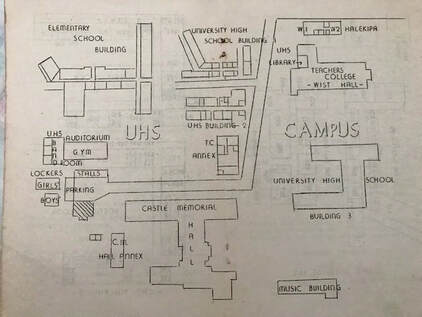
THIS COULD BE IN THE FUTURE OF OUR SCHOOL
There have been rumors in the past about the University Laboratory School (ULS) closing its doors for various and sundry reasons. During January 2023 those rumors were laid to rest when the President of the University of Hawaii-Manoa, said at a State Legislative Hearing, and in subsequent meetings, that the University had plans for the existing land on which the buildings we knew as University High School (UHS) - those plans would require the school to vacate its current location.
What was initially distressing, UH-Manoa, said it had no affiliation with the Laboratory School and they had no responsibility for the future of the school. Read that to mean, UH would not provide buildings or other resources to relocate the Lab School. It seemed that WE (the Lab School and concerned alumni) were on our own - the State was unaware of the UH-Manoa plans and had made no provisions for the relocation and/or continuation of the Lab School. Eventually, UH-Manoa told the legislature they would work with the school on future plans.
For the moment, fears are abated and WE wait to hear from UH-Manoa to discuss the future. Of concern is not only the relocation of the school, but the CONTINUATION of the school as a functioning institution. As of 2001, ULS is a public charter school under the auspices of the State of Hawaii Department of Education by the State Public Charter School Commission which has among one of its major responsibilities to: “Preparing and executing the overall charter school system budget and allocating and distributing both state and federal funds to the charter schools.” Public chatter schools are operated by independent governing boards that operate under a performance contract with the State Public Charter School Commission.
Excerpt from papers, emails, and conversations are provided below to provide you with background (and history), that led to the current situation.
HISTORICAL BACKGROUND - University Laboratory School (note 1966):
1930: A new Normal School Building is constructed by the Territorial Department of Public Instruction on a 15-acre site of the former pig farm at University Avenue and Metcalf Street, adjoining the University of Hawai‘i. The Normal School Building houses faculty and elementary students and a new site for teacher preparation.
1931: The Territorial Legislature transfers the Territorial Normal and Training School from the Territorial Department of Public Instruction to the University of Hawai‘i, including the land, Normal School Building, faculty and students. Territorial Normal and Training School is merged with the University of Hawai‘i’s School of Education creating the Teachers College.
1936: University Elementary School is built on Metcalf Street as part of Teachers College at a cost of $57,069. UES houses classes for grades 1 to 6. Grades 7 and 8 are housed in the Teachers College Building.
1943: University High School Building 1, on the Metcalf Street side of Teachers College, is completed as an intermediate school at a cost of $88,618. UHS 1 was the only building built on the UH campus during World War II.
1948: University High School Building 2 is constructed adjacent to Building 1, the first built on the UH campus after World War II. The schools (elementary, intermediate, and high) now offer a complete K–12 curriculum on campus.
1951: The first class graduates from University High School.
1957: University High School Building 3 is completed at a cost of $327,000, the first permanent concrete structure added to COE since 1931.
1965: The Hawai‘i State Legislature commissions a comprehensive review of education programs to prepare teachers, including the function and role of the laboratory schools. The results of the review would be published the following year with the title Preparation of Teachers and other Educational Personnel in Hawai‘i and would become known as the “Stiles Report.”
1966: Following the recommendation of the Stiles Report, the College of Education undergoes a major reorganization.....The role and function of the laboratory schools changes from demonstration and teacher training to research and innovation, fulfilling Dean Everly’s vision of laboratory schools research and development centers. The intern program is dropped and the college becomes an upper division college. Result was reduction in K–12 student population.
1969: Hawai‘i Curriculum Center is dissolved following HIDOE withdrawal of assigned faculty. The unit is renamed the Curriculum Research & Development Group (CRDG) and charged to develop curriculum and materials for schools. The elementary, intermediate, and high schools are combined and renamed University Laboratory School (ULS). ULS becomes an R&D site within CRDG.
1990 : Under the leadership of Dean John Dolly plans for a new education complex to be shared with ULS were developed and ultimately approved for construction. Hawai‘i State Legislature approved funding for planning and construction of a new College of Education building to be constructed on the present site of University High School Bldgs 1 & 2. A groundbreaking ceremony was held in December for construction of a 180,000 sf education building to be completed at a cost of $11.5 M.
1994: Governor Cayetano cancels $11.5 M project citing state budget shortfall.
2001: The University Laboratory School (ULS) becomes a K-12 charter school after UH funding for operating the school is withdrawn from the College of Education. CRDG continues to operate the school as a laboratory for curriculum R&D in collaboration with the charter school board.
WHAT DOES UH-MANOA WANT TO DO WITH THE LAND?
“During Hawai‘i State Legislature, Senate Committee on Ways and Means Committee on Higher Education meeting on January 12, 2023, the University of Hawaii (UH) announced plans to redevelop the entire block between Metcalf and Dole along University Avenue where the Lab School, College of Education, and PBS building are currently located.
….UH representatives, besides stating that the Lab School will need to find a new home, have made their intentions about the area very clear: they plan to redevelop the property.
UH representatives told the Senators that they want to work with a private developer to turn the area into a mixed residential/commercial space. Redeveloping the property into a mixed residential/commercial area will have a profound 24/7 impact on the community with significantly greater density, vehicular, and foot traffic, the look of the neighborhood, and the safety and security of residents, among other issues.”
CURRENT SITUATION AS OF FEBRUARY 2023: (Excerpts from ULS Communication dated February 2, 2023
“Senate Informational Hearing January 31, 2023 Members of the ULS Governing Board, ULS Administration as well as selected faculty and student representatives attended an informational hearing held Tuesday, January 31, 2023 at the State Capitol. The hearing was called to discuss several agenda items involving the University including how the proposed development plan would affect the Lab School. University officials stated that they do not have an actionable plan to develop this area and therefore there is no issue at this time. They also acknowledged that there is an affiliation agreement between the Lab School and the UH College of Education, correcting what President Lassner had stated in the Ways and Means hearing in early January. The Senators requested the University to begin a line of communication with the Lab School and to be transparent in any future developments that could ultimately affect the school. University representatives pledged to open lines of communication with ULS.
Mānoa Neighborhood Board Meeting February 1, 2023: At the Mānoa neighborhood board meeting, the topic of the proposed land development and its effect on the Lab School was discussed. University representatives and consultants who drafted the Long Range Development Plan (LRDP) for the University were adamant that while this block of land (between Dole street and Metcalf street) is in the plan to be developed into a mixed residential/commercial area, there are no immediate actionable plans to do so at this time. University representatives once again pledged to open lines of communication with ULS.
Moving forward, the ULS leadership team is in the process of setting up a meeting with University representatives to get clarity on their future plans and to establish an open line of communication. We believe that this meeting will also provide us the opportunity to reiterate to the University our appreciation for being on the Mānoa campus and to hopefully establish a stronger relationship.
At this time and in the foreseeable future, the University Lab School will remain in its current location and continue to do what we do best and what is in the best interest of our students. We want our students and families to know that the ULS leadership will work to ensure that we will always have a school and a place to reside whether that be on the University campus or elsewhere. The ULS Foundation, our support organization, will be reaching out to you in the coming weeks to let you know how you can help the school.”
We will keep you informed of future discussions as they become known.
The uncertain future of the buildings (perhaps of the school’s existence itself), which provided memories of our formative years, may be “ALL PAU” in the tomorrows we have left.
ATTEND THE 60TH AND LAST REUNION, IN SEPTEMBER 2023, FOR ONE LAST LOOK!
There have been rumors in the past about the University Laboratory School (ULS) closing its doors for various and sundry reasons. During January 2023 those rumors were laid to rest when the President of the University of Hawaii-Manoa, said at a State Legislative Hearing, and in subsequent meetings, that the University had plans for the existing land on which the buildings we knew as University High School (UHS) - those plans would require the school to vacate its current location.
What was initially distressing, UH-Manoa, said it had no affiliation with the Laboratory School and they had no responsibility for the future of the school. Read that to mean, UH would not provide buildings or other resources to relocate the Lab School. It seemed that WE (the Lab School and concerned alumni) were on our own - the State was unaware of the UH-Manoa plans and had made no provisions for the relocation and/or continuation of the Lab School. Eventually, UH-Manoa told the legislature they would work with the school on future plans.
For the moment, fears are abated and WE wait to hear from UH-Manoa to discuss the future. Of concern is not only the relocation of the school, but the CONTINUATION of the school as a functioning institution. As of 2001, ULS is a public charter school under the auspices of the State of Hawaii Department of Education by the State Public Charter School Commission which has among one of its major responsibilities to: “Preparing and executing the overall charter school system budget and allocating and distributing both state and federal funds to the charter schools.” Public chatter schools are operated by independent governing boards that operate under a performance contract with the State Public Charter School Commission.
Excerpt from papers, emails, and conversations are provided below to provide you with background (and history), that led to the current situation.
HISTORICAL BACKGROUND - University Laboratory School (note 1966):
1930: A new Normal School Building is constructed by the Territorial Department of Public Instruction on a 15-acre site of the former pig farm at University Avenue and Metcalf Street, adjoining the University of Hawai‘i. The Normal School Building houses faculty and elementary students and a new site for teacher preparation.
1931: The Territorial Legislature transfers the Territorial Normal and Training School from the Territorial Department of Public Instruction to the University of Hawai‘i, including the land, Normal School Building, faculty and students. Territorial Normal and Training School is merged with the University of Hawai‘i’s School of Education creating the Teachers College.
1936: University Elementary School is built on Metcalf Street as part of Teachers College at a cost of $57,069. UES houses classes for grades 1 to 6. Grades 7 and 8 are housed in the Teachers College Building.
1943: University High School Building 1, on the Metcalf Street side of Teachers College, is completed as an intermediate school at a cost of $88,618. UHS 1 was the only building built on the UH campus during World War II.
1948: University High School Building 2 is constructed adjacent to Building 1, the first built on the UH campus after World War II. The schools (elementary, intermediate, and high) now offer a complete K–12 curriculum on campus.
1951: The first class graduates from University High School.
1957: University High School Building 3 is completed at a cost of $327,000, the first permanent concrete structure added to COE since 1931.
1965: The Hawai‘i State Legislature commissions a comprehensive review of education programs to prepare teachers, including the function and role of the laboratory schools. The results of the review would be published the following year with the title Preparation of Teachers and other Educational Personnel in Hawai‘i and would become known as the “Stiles Report.”
1966: Following the recommendation of the Stiles Report, the College of Education undergoes a major reorganization.....The role and function of the laboratory schools changes from demonstration and teacher training to research and innovation, fulfilling Dean Everly’s vision of laboratory schools research and development centers. The intern program is dropped and the college becomes an upper division college. Result was reduction in K–12 student population.
1969: Hawai‘i Curriculum Center is dissolved following HIDOE withdrawal of assigned faculty. The unit is renamed the Curriculum Research & Development Group (CRDG) and charged to develop curriculum and materials for schools. The elementary, intermediate, and high schools are combined and renamed University Laboratory School (ULS). ULS becomes an R&D site within CRDG.
1990 : Under the leadership of Dean John Dolly plans for a new education complex to be shared with ULS were developed and ultimately approved for construction. Hawai‘i State Legislature approved funding for planning and construction of a new College of Education building to be constructed on the present site of University High School Bldgs 1 & 2. A groundbreaking ceremony was held in December for construction of a 180,000 sf education building to be completed at a cost of $11.5 M.
1994: Governor Cayetano cancels $11.5 M project citing state budget shortfall.
2001: The University Laboratory School (ULS) becomes a K-12 charter school after UH funding for operating the school is withdrawn from the College of Education. CRDG continues to operate the school as a laboratory for curriculum R&D in collaboration with the charter school board.
WHAT DOES UH-MANOA WANT TO DO WITH THE LAND?
“During Hawai‘i State Legislature, Senate Committee on Ways and Means Committee on Higher Education meeting on January 12, 2023, the University of Hawaii (UH) announced plans to redevelop the entire block between Metcalf and Dole along University Avenue where the Lab School, College of Education, and PBS building are currently located.
….UH representatives, besides stating that the Lab School will need to find a new home, have made their intentions about the area very clear: they plan to redevelop the property.
UH representatives told the Senators that they want to work with a private developer to turn the area into a mixed residential/commercial space. Redeveloping the property into a mixed residential/commercial area will have a profound 24/7 impact on the community with significantly greater density, vehicular, and foot traffic, the look of the neighborhood, and the safety and security of residents, among other issues.”
CURRENT SITUATION AS OF FEBRUARY 2023: (Excerpts from ULS Communication dated February 2, 2023
“Senate Informational Hearing January 31, 2023 Members of the ULS Governing Board, ULS Administration as well as selected faculty and student representatives attended an informational hearing held Tuesday, January 31, 2023 at the State Capitol. The hearing was called to discuss several agenda items involving the University including how the proposed development plan would affect the Lab School. University officials stated that they do not have an actionable plan to develop this area and therefore there is no issue at this time. They also acknowledged that there is an affiliation agreement between the Lab School and the UH College of Education, correcting what President Lassner had stated in the Ways and Means hearing in early January. The Senators requested the University to begin a line of communication with the Lab School and to be transparent in any future developments that could ultimately affect the school. University representatives pledged to open lines of communication with ULS.
Mānoa Neighborhood Board Meeting February 1, 2023: At the Mānoa neighborhood board meeting, the topic of the proposed land development and its effect on the Lab School was discussed. University representatives and consultants who drafted the Long Range Development Plan (LRDP) for the University were adamant that while this block of land (between Dole street and Metcalf street) is in the plan to be developed into a mixed residential/commercial area, there are no immediate actionable plans to do so at this time. University representatives once again pledged to open lines of communication with ULS.
Moving forward, the ULS leadership team is in the process of setting up a meeting with University representatives to get clarity on their future plans and to establish an open line of communication. We believe that this meeting will also provide us the opportunity to reiterate to the University our appreciation for being on the Mānoa campus and to hopefully establish a stronger relationship.
At this time and in the foreseeable future, the University Lab School will remain in its current location and continue to do what we do best and what is in the best interest of our students. We want our students and families to know that the ULS leadership will work to ensure that we will always have a school and a place to reside whether that be on the University campus or elsewhere. The ULS Foundation, our support organization, will be reaching out to you in the coming weeks to let you know how you can help the school.”
We will keep you informed of future discussions as they become known.
The uncertain future of the buildings (perhaps of the school’s existence itself), which provided memories of our formative years, may be “ALL PAU” in the tomorrows we have left.
ATTEND THE 60TH AND LAST REUNION, IN SEPTEMBER 2023, FOR ONE LAST LOOK!
The Law Professor Visits
Winona Tanaka was visiting family on Oahu in December 2022 and classmates were able to have lunch with her on Tuesday, December 27 at the Golden Eagle Chinese restaurant.
After graduation in1963, Winona attended Wellesley College (Alma mater of Hillary Clinton, Madame Chiang Kai Shek, Madeline Albright and many other prominent women in the world), she then attended Columbia Law School. Winona practiced law until the birth of her daughter when she moved to academia with the University of Tulsa Law School where she has been since 1987. She was the Vice Provost for academic affairs for the last ten years and recently retired this past year. Never one to stay idle, Winona is keeping active by teaching a class in the law school.
These classmates raised their chopsticks at the Golden Eagle on December 27, 2022:
After graduation in1963, Winona attended Wellesley College (Alma mater of Hillary Clinton, Madame Chiang Kai Shek, Madeline Albright and many other prominent women in the world), she then attended Columbia Law School. Winona practiced law until the birth of her daughter when she moved to academia with the University of Tulsa Law School where she has been since 1987. She was the Vice Provost for academic affairs for the last ten years and recently retired this past year. Never one to stay idle, Winona is keeping active by teaching a class in the law school.
These classmates raised their chopsticks at the Golden Eagle on December 27, 2022:
Miss Kunioka 100th Birthday Celebration - September 19, 2022
UPDATE: Miss Kunioka passed away shortly after this celebration
Aloha Classmates!
Just a “quick” report that all went well today as we celebrated Miss Kunioka’s 100th Birthday. We had a good representation from the Class which included: wata, phay, Sue Ann, Ricky, JC and yours truly. Registering into 1 Kalakaua’s registry and the Hale Ola Kino (2nd floor care where Miss Kunioka resides) was challenging (not many “techies" in this group), but each of us seeing Miss Kunioka on this special day was special. We were precluded from visiting her as a group so we went in individually with our birthday wishes in the following order: Vern, head (John Chong), phay (Fay), Ricky, Sue Ann and wata (Carolyn). We brought in a cake, poster, orchid plant, balloons, and the many wishes from our classmates captured by video. With this batting order, she was not very responsive to head and me altho she knew what was going on and nodded. And for sure, I got her to react when I told her that she will get better when she eats all the broccoli! By the time phay met with her, she responded verbally with “thank you’s”, etc. Ricky said she watched the entire video and was very thankful for all the wishes that she received. And Sue Ann and wata had good visits with her and she responded well to them (could it be a ladies' thing?)! As an example, head remembers that the 5th grade boys had to wash the slop cans when working at the cafeteria; not the young ladies!
I was told by the aides that Miss Kunioka has not been eating very well and that they were hopeful that today’s “festivities” might pick her up, and perhaps improve her appetite. They said she knew today was her 100th birthday and what an honor it was that Miss Kunioka agreed to having us visit with her. I told the aide that the 2nd floor residents should sing “Happy Birthday” to Miss Kunioka with the cake and candles that we provided.
Ricky and Sue Ann took pictures of this celebration and both said that they would transmit them to you.
As an aside, if anyone wants to visit Miss Kunioka, they might want to contact the Hale Ola Kino, 1314 Kalakaua Avenue (1 Kalakaua Retirement Facility), 2nd Floor. Sandra, Ricky and I were in regular contact with Michelle Kang, telephone: (808) 983-4444, to arrange for today’s visit. BTW, whenever I’ve contacted Miss Kunioka, she always says to thank the Class of “63 for all the love and support that we’ve provided her.
Did I miss anything? Mahalo plenty classmates for your assistance in celebrating Miss Kunioka’s 100th Birthday!
vern
Aloha Classmates!
Just a “quick” report that all went well today as we celebrated Miss Kunioka’s 100th Birthday. We had a good representation from the Class which included: wata, phay, Sue Ann, Ricky, JC and yours truly. Registering into 1 Kalakaua’s registry and the Hale Ola Kino (2nd floor care where Miss Kunioka resides) was challenging (not many “techies" in this group), but each of us seeing Miss Kunioka on this special day was special. We were precluded from visiting her as a group so we went in individually with our birthday wishes in the following order: Vern, head (John Chong), phay (Fay), Ricky, Sue Ann and wata (Carolyn). We brought in a cake, poster, orchid plant, balloons, and the many wishes from our classmates captured by video. With this batting order, she was not very responsive to head and me altho she knew what was going on and nodded. And for sure, I got her to react when I told her that she will get better when she eats all the broccoli! By the time phay met with her, she responded verbally with “thank you’s”, etc. Ricky said she watched the entire video and was very thankful for all the wishes that she received. And Sue Ann and wata had good visits with her and she responded well to them (could it be a ladies' thing?)! As an example, head remembers that the 5th grade boys had to wash the slop cans when working at the cafeteria; not the young ladies!
I was told by the aides that Miss Kunioka has not been eating very well and that they were hopeful that today’s “festivities” might pick her up, and perhaps improve her appetite. They said she knew today was her 100th birthday and what an honor it was that Miss Kunioka agreed to having us visit with her. I told the aide that the 2nd floor residents should sing “Happy Birthday” to Miss Kunioka with the cake and candles that we provided.
Ricky and Sue Ann took pictures of this celebration and both said that they would transmit them to you.
As an aside, if anyone wants to visit Miss Kunioka, they might want to contact the Hale Ola Kino, 1314 Kalakaua Avenue (1 Kalakaua Retirement Facility), 2nd Floor. Sandra, Ricky and I were in regular contact with Michelle Kang, telephone: (808) 983-4444, to arrange for today’s visit. BTW, whenever I’ve contacted Miss Kunioka, she always says to thank the Class of “63 for all the love and support that we’ve provided her.
Did I miss anything? Mahalo plenty classmates for your assistance in celebrating Miss Kunioka’s 100th Birthday!
vern
Miles,
As you can see from the pictures, John, Vernon, Sue Ann and Fay came in one car to One Kalakaua (now known as Hale Ola Kino), Peter Adler dropped off Carolyn, and I parked down the street clear of the big tree (and associated birds) next to the facility. Vernon and John checked it on an iPad at the entrance under the direction of a staff member, then went up to individually visit Miss Kunioka. The rest of us then fumbled through the check in process, luckily John was around to help us. The staff let us proceed as a group of three or four to the second floor waiting area. We waited there until we were called individually to check in again (another iPad). Vernon, John and Fay went in individually, each reporting that Miss Kunioka was not very responsive so I was surprised that she was more "awake" when I came to the room. Met the nurse, Michelle Kang, and asked her to let me replace the original video with the corrected one. She knew all about using the iPad Air Drop feature so that was fast. Placed the iPad in front of Miss Kunioka and she watched the whole 3:46 min presentation, nodding her head like she recognized indivduals and even said a very soft but very audible "Thank you!" when it was over. I then checked out but before I left Carolyn had me deliver the balloons. I then left and she and Sue Ann then proceeded to Miss Kunioka's room. It was supposed to be one person at a time but as you can see from their photos, they were both in there at the same time (I likely was not as forceful with the nurses).
Vernon, John and other members of the group can probably provide more insight into what else actually happened.
Thanks,
Ricky
As you can see from the pictures, John, Vernon, Sue Ann and Fay came in one car to One Kalakaua (now known as Hale Ola Kino), Peter Adler dropped off Carolyn, and I parked down the street clear of the big tree (and associated birds) next to the facility. Vernon and John checked it on an iPad at the entrance under the direction of a staff member, then went up to individually visit Miss Kunioka. The rest of us then fumbled through the check in process, luckily John was around to help us. The staff let us proceed as a group of three or four to the second floor waiting area. We waited there until we were called individually to check in again (another iPad). Vernon, John and Fay went in individually, each reporting that Miss Kunioka was not very responsive so I was surprised that she was more "awake" when I came to the room. Met the nurse, Michelle Kang, and asked her to let me replace the original video with the corrected one. She knew all about using the iPad Air Drop feature so that was fast. Placed the iPad in front of Miss Kunioka and she watched the whole 3:46 min presentation, nodding her head like she recognized indivduals and even said a very soft but very audible "Thank you!" when it was over. I then checked out but before I left Carolyn had me deliver the balloons. I then left and she and Sue Ann then proceeded to Miss Kunioka's room. It was supposed to be one person at a time but as you can see from their photos, they were both in there at the same time (I likely was not as forceful with the nurses).
Vernon, John and other members of the group can probably provide more insight into what else actually happened.
Thanks,
Ricky
Video Birthday Wishes from Class of '63 are shown in the video below.
WALLER
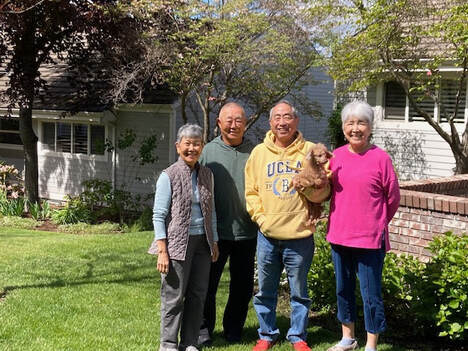
Lorri and I visited Nora and waller on Tuesday, May 10th and spent the night with them in Rogue Valley Manor, Medford, OR. It took less than 3 hours from Eugene (166 miles), nonstop and fortunately, it was sun shiny and dry, so the driving was easy. They reside in a very nice 2 bedroom/2 bath “cottage” approximately 1,300 sq ft. Nora has done much to make the cottage very “homey” and comfortable. They took us on a tour of the entire retirement facility (600 acres) and they have practically everything to do to keep them busy (e.g.; library, gym, golf course - 9-holes, workshop, looms, pickle ball, lawn bowling, etc., etc.). Waller said it is the most complete retirement facility that he has ever seen. Because of covid requirements, guests cannot eat in the dining room so Nora prepared a very scrumptious meal. Also, I’m happy to report that their Ozzie has not changed one bit in his disposition and is probably one of the most loving dog. The Fong's were in the process of purchasing a 2nd-hand golf cart since they only have one car. This way Nora gets to drive around “campus" pursuing the many activities that she does. Also, both do some volunteer work so the cart will help get them around. They’re very happy with their decision and remember, it is “close” when compared to the one in San Antonio, TX. I’m happy to report that both are in good shape, and waller has to watch his diet as in the past because of the threat of diabetes. They send their “aloha” to all and I’m sure would appreciate any visitor from HI.
A beautiful day @ Rogue Valley Manor. Pic taken by waller’s neighbor who had “blue/magenta hair (I forget the actual color)” in front of their “cottage”! Ozzie is a happy camper and temperature was probably in the hi-50’s/lo-60’s.
Note: waller no longer wears red tee shirts under his over garment, but now wears red shoes! Wat kine dat?
Link to Rogue Valley Manner: https://retirement.org/rvm/
A beautiful day @ Rogue Valley Manor. Pic taken by waller’s neighbor who had “blue/magenta hair (I forget the actual color)” in front of their “cottage”! Ozzie is a happy camper and temperature was probably in the hi-50’s/lo-60’s.
Note: waller no longer wears red tee shirts under his over garment, but now wears red shoes! Wat kine dat?
Link to Rogue Valley Manner: https://retirement.org/rvm/
RENAISSANCE MAN - MEL CHOY
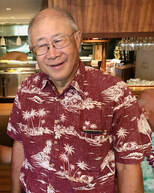
A Renaissance man is defined as a person with many talents or areas of knowledge - a description that could be applied to Mel Choy. He is a dentist, business entrepreneur, tennis and baseball player still playing in his 70’s, world traveler, and author.
Mel describes himself in this way: “I am a retired Chinese American dentist who has written many dental articles as well as a biography about a famous Chinese war hero.”
His novel, PEKING MAN, was published in January 2022 and is available in hard copy or e-book at the following site rosedogbookstore.com or on Amazon (amazon.com). Mel came to write this book when he said “I found a rough draft of a proposed movie and decided to transform it into a novel based on my travels in China, knowledge of Chinese history and my Chinese heritage.”
A pre-publication review an excerpt from PEKING MAN can be read at https://reedsy.com/discovery/book/peking-man-melvin-choy#review . Here is an excerpt of the review. "This story mainly revolves around an orphaned child by the name of Tong Tai, who grows up to become an acknowledged archaeologist, with a particular interest in the Peking Man. As the reader, we follow him from around the time he was born, throughout a difficult upbringing, which teaches him important survival skills, and throughout the rest of his living days. In this story, the author shows how being raised a certain way, and being used to getting by and living on your own, can create challenges in forming relationships with other people. Aside from the interesting historical descriptions and theories, it is a good book that points to several important life lessons. First and foremost, it shows the many and detrimental consequences of addiction and domestic violence. In addition, it can teach you the importance of having a backup plan in desperate times. On the other hand, it can also show you how life can catch up with you, and how actions have consequences, even if said actions were committed several decades ago.”
Mel’s message to classmates: “You may or may not want to pursue reading the book if this does not perk your interest. For those of you who do want to read it, thank you and please do a review -good or bad as I have thick skin. It was something I always wanted to do and having the time during COVID helped me realize my goal. Hope I did something that the Class of 1963 can be proud of.”
After reading Chapter 1, I want to read the entire book to find out what happens to Tao and Bai Tai and how the Peking Man skull fits into the story.
Miles Nakashima
March 2022
Mel describes himself in this way: “I am a retired Chinese American dentist who has written many dental articles as well as a biography about a famous Chinese war hero.”
His novel, PEKING MAN, was published in January 2022 and is available in hard copy or e-book at the following site rosedogbookstore.com or on Amazon (amazon.com). Mel came to write this book when he said “I found a rough draft of a proposed movie and decided to transform it into a novel based on my travels in China, knowledge of Chinese history and my Chinese heritage.”
A pre-publication review an excerpt from PEKING MAN can be read at https://reedsy.com/discovery/book/peking-man-melvin-choy#review . Here is an excerpt of the review. "This story mainly revolves around an orphaned child by the name of Tong Tai, who grows up to become an acknowledged archaeologist, with a particular interest in the Peking Man. As the reader, we follow him from around the time he was born, throughout a difficult upbringing, which teaches him important survival skills, and throughout the rest of his living days. In this story, the author shows how being raised a certain way, and being used to getting by and living on your own, can create challenges in forming relationships with other people. Aside from the interesting historical descriptions and theories, it is a good book that points to several important life lessons. First and foremost, it shows the many and detrimental consequences of addiction and domestic violence. In addition, it can teach you the importance of having a backup plan in desperate times. On the other hand, it can also show you how life can catch up with you, and how actions have consequences, even if said actions were committed several decades ago.”
Mel’s message to classmates: “You may or may not want to pursue reading the book if this does not perk your interest. For those of you who do want to read it, thank you and please do a review -good or bad as I have thick skin. It was something I always wanted to do and having the time during COVID helped me realize my goal. Hope I did something that the Class of 1963 can be proud of.”
After reading Chapter 1, I want to read the entire book to find out what happens to Tao and Bai Tai and how the Peking Man skull fits into the story.
Miles Nakashima
March 2022
CLASSMATE DROPS IN
|
I guess you can only tolerate certain things for so long before you have to take charge of the situation. Living in Guam and having to endure the trials and tribulations imposed by the COVID epidemic, Dayton left the island and traveled to the Midwest on a trip that would add a change of scenery to his normal routine. On his way back to Guam, Dayton stopped and visited with classmates. These pictures show him with Ricky and Milton when they had lunch. Food looks ono!
After a golf outing with Vern, Sugi, Clay, and Howie, Dayton enjoys saimin at Shiro's. While visiting, Dayton visited Dwight's grave site yesterday and took photos of his headstone and his resting place. I also found out he was to be in the first class of the UH School of Law but passed before school started. He died too young. See you on my next visit. Mahalo and Aloha. Dayton (Note: click on pictures to enlarge) |
TWO FACES HAVE I CONTEST RESULTS
FIRST PRIZE...........FAY YOSHIDA - Perfect Score (23 of 23)
SECOND PRIZE.......SUE ANN LAU - 22 OF 23
THIRD PRIZE.........JOHN CHONG - 21 OF 23
CONTEST TIDBITS:
These classmates did not have masks in the contest: Karen Lei Kokubun, John Lee, Frank Yap.
Classmates with two masks were: Bongo Chun, Babs Yamashita, Fay Yoshida
Masks receiving most incorrect guesses were: #8 Bill Beppu; #21 Sue Ann
SECOND PRIZE.......SUE ANN LAU - 22 OF 23
THIRD PRIZE.........JOHN CHONG - 21 OF 23
CONTEST TIDBITS:
These classmates did not have masks in the contest: Karen Lei Kokubun, John Lee, Frank Yap.
Classmates with two masks were: Bongo Chun, Babs Yamashita, Fay Yoshida
Masks receiving most incorrect guesses were: #8 Bill Beppu; #21 Sue Ann
JPO Memories
The recent flurry of emails about our experiences as Junior Police Officers (J.P.O.) seemed to revive long forgotten memories.
In September of 1922, 64 Boy Scouts were given the responsibility fo overseeing nine intersections fronting nine Honolulu area schools. Because of their success, the following year Honolulu Sheriff Charles Rose swore in 64 members of the Boy Scouts as Junior Traffic Police Officers. By 1932, 76 schools had J.P.O. units.
Today, the Traffic Division of the Honolulu Police Department is responsible for the JPO program. The JPO program has been active for over 80 years and is the only student traffic assistance program in the nation. JPO’s provide traffic safety assistance a 120 Oahu schools during the year.
The picnic and competition continues today as shown in this video https://www.youtube.com/watch?v=pNm0rDpgrcw .
Memories from other students during their time as JPO’s can be seen in this blog http://www.midlifecrisishawaii.com/2011/08/17/do-you-remember-jpo/.
In September of 1922, 64 Boy Scouts were given the responsibility fo overseeing nine intersections fronting nine Honolulu area schools. Because of their success, the following year Honolulu Sheriff Charles Rose swore in 64 members of the Boy Scouts as Junior Traffic Police Officers. By 1932, 76 schools had J.P.O. units.
Today, the Traffic Division of the Honolulu Police Department is responsible for the JPO program. The JPO program has been active for over 80 years and is the only student traffic assistance program in the nation. JPO’s provide traffic safety assistance a 120 Oahu schools during the year.
The picnic and competition continues today as shown in this video https://www.youtube.com/watch?v=pNm0rDpgrcw .
Memories from other students during their time as JPO’s can be seen in this blog http://www.midlifecrisishawaii.com/2011/08/17/do-you-remember-jpo/.
Shown below are Class of '63 comments in response to the email asking how many of us remembered being in JPO while in elementary school. The date and classmate's name are shown for each message.
4/5
Yes, I also was a JPO! I remember we had a picnic as part of the program one year, I think at Ala Moana Park! We were really only 10 years old?
-- Cathy Coulter
4/5
Now that I think about it, wasn't being a JPO was a 6th grader privilege?
— Marjorie Mattos
4/5
Yes Margie, Yes this girl remembers being a JPO and I thought it was really cool!
Aloha,
Sharon Soper
4/5
Actually we had the young ladies pull JPO duties at our elementary school. Interestingly, Roy Kanno was the only Captain of both platoons. I was a 1LT and the head of the ladies platoon was a 1LT. She was assisted by a 2LT. Point being, Roy technically was in charge of both platoons altho he only pulled duty every other week as we alternated JPO duties by the week. We wore white shirts with black ties, khaki pants and shoes with the red felt “JPO” across our chests. At our school, only 6th graders pulled duty and we had to help our students cross Nimitz Hwy … that was quite a responsibility. We loved reporting cars (by their license plates and car description) who ran red lites or made right turn on red to the policeman. We just had to do our duty well! I remember those yellow raincoats too … they were heavy! BTW, the weeks that we pulled duty, we wore aloha shirts over our long sleeve white shirts during the day just so that we wouldn’t dirty our long sleeve white shirts. I thought we actually wore Army helmets painted red. They were eventually replaced by those red plastic hats that resemble the batting helmets worn by ball players. This is all based on my memory as a 73 year old!
Vernon
4/5
Cathy: at our elementary school, we had a platoon of young ladies (our platoons were not coed) so we alternated our duties by the week. Only 6th graders were “privileged” to serve as JPOs. I told Miles that our dress was long sleeve white shirts, black tie, khaki pants and shoes (and that was a real challenge in Kalihi). During the school day, we wore aloha shirts over our long sleeve white shirts so that we wouldn’t dirty our duty shirts. I do remember the picnic at Ala Moana Part and I believe we went by districts (I thought the other schools were from the Kalihi and near by districts). They also had a formation competition where we all had to be drilled as a unit and were rated by our performance. Puuhale School did not win, but we received some mention for doing well as our school rarely scored well in these competitions. BTW, our Captain of our JPO force was Roy Kanno! Great hearing from you!
vern
4/5
You"re right, Margie ----- being a JPO was reserved only for 6th graders! Btw, wasn't Jerry Park one of the captains? Phay🤗😊☺
4/5
I was also a JPO I also remember picnics
Babs
4/5
I am jealous. Never got to be one.
Sandra
4/6
I forgot about JPO duty but now that it was brought up I remember being part of those JPO days and the picnic too.
Darlene
4/6
don’t recall ever being asked to be a JPO so have no experiences to share. In recent years all these new studies on child behavior have left me thinking that I may have had a form of attention deficit syndrome (my 4th grade report card from Mrs. Fitzimmons mentioned always looking out the window) so maybe the teachers in charge didn’t want to take a chance on me…
Ricky
4/7
I didn't attend University school until the seventh grade. But I did my JPO service at Waialae Kahala elementary school. I remember our group took our responsibilities seriously and we did not lose any students on our watch. I can still remember marching down to our posts and raising and lowering our stop signs. Funny I can't remember yesterday but I can remember this 60 (?) years ago?
Bob DeForest
4/7
This is great. Yes several of us had Dad's at HPD. I remember the marching and I recall we had marching competitions at the picnics --that was attended by many other schools. I can't believe Dayton found this list. Robert's right--barely remember yesterday... but JPO duty....lasting memory.
Babs
4/7
Robert: yes, we were very serious of our responsibilities especially since back then, parents didn’t walk their children to school. I forgot to mention that at our school, members of the JPO staff were responsible for raising and lowering the school flag and that was done after pulling our morning and afternoon duties. I’m thinking that the entire staff was in formation for the flag ceremonies. Hope all is well in TX and I hope you’re thinking of joining us for the celebration of our 75th birthdays (we’ll be getting together shortly to start the planning process)! aloha,
vern
4/7
Miles: I found a list for 6th grade. The program was run by Miss Kay Fossum and assisted by Ted Kalua and Walter Tonai. Members were: Roberta Aisaka, Brian Chikamoto, Barbara Centeio, Marjorie Clark, Cathy Coulter, Bobby Fern, Paul Inoue, Lawrence Lim, Patrice Okumoto, Jerry Park, Sharon Soper, Pamela Spector, Dennis Sugihara, James Vine and myself. Barbara, Marjorie, Sharon and believe Pamela's dads were HPD so perhaps they were "encouraged" to join. I remember Barbara's father being a "giant"...not somebody you talked back to
Dayton
4/7
Miles:
You really struck a nerve on this one!
The best response other than a reunion announcement! Heard from classmates we haven’t heard from in years.
Good Job Buddy....and Dayton had a list?
C'mon man....I know he dumped virtually everything he had when he made the move to Guam and all his high school stuff was dumped for him by his parents when he was off in the Air Force etc....so, he kept this JPO list?…..
JC
4/8
you’re doing really great! Thanks sooo much for all the
Great memories. Yes.. and I also was a JPO .
Keep up the good work. These Emails let me
know how much I miss you guys
Duckstad ( Jim Vine)
4/8
Alas, I attended an all-boys school in the 6th grade. And thus somewhat socially deprived.
The leader of our JPO unit was known as Captain Kissable. (That requires another story.) Each of the two 6th grade classes alternated having the weekly task of the ensuring cross-walk safety. JPO’s were posted at two sites– on Date and Laau Streets (which had working stop lights – even in those days of yore); and at the corner of Laau Street , which ran parallel to Date, with access to the School’s entrance. I seem to recall 2 JPOs being posted at the Laau St. site, and 3, or maybe 4, posted at the Date St. corner.
The JPOs on morning duty were marched from their classroom to their assigned sites by their sergeant. And perhaps accompanied by Capt. Kissable or some other authority figure. “Marching” was the ‘ol left-right-left-right routine. Those who couldn’t figure that out were made Sergeant, who was authorized to blow a whistle, so those who knew how to march and count cadence, could lower and raise their stop signs.
And yes, we wore white short-sleeve shirts, clip-on black ties, kaki long pants. And shoes. To stomp whatever critters were in the march path. And those plastic red helmets.
The thrill of the day was seeing a police officer in their patrol car motoring down the street. And saluting the officer as he drove by. Such were the pleasures of life.
As socially deprived as some of us were, we were allowed to attend the JPO picnic at Ala Moana Park. And there we mingled with kids from other schools. And lost some of that ‘deprivity’. Since we were 11 and 12 year-olds. Actually, however, most of us were into competitive activities – such as sports, and other sweat inducing events.
Frank
4/9
Re: Dayton's list...
going back over 60 years is taxing to say the least but I believe Dayton's list is like half a list.
If I remember correctly, either one class e.g. 6-111 vs 6-112 performed JPO duties one week and the other class or other half did it the following week.
Something to that effect, which is why some names don't appear on Dayton's list....
Just sayin’.......
JC
4/5
Yes, I also was a JPO! I remember we had a picnic as part of the program one year, I think at Ala Moana Park! We were really only 10 years old?
-- Cathy Coulter
4/5
Now that I think about it, wasn't being a JPO was a 6th grader privilege?
— Marjorie Mattos
4/5
Yes Margie, Yes this girl remembers being a JPO and I thought it was really cool!
Aloha,
Sharon Soper
4/5
Actually we had the young ladies pull JPO duties at our elementary school. Interestingly, Roy Kanno was the only Captain of both platoons. I was a 1LT and the head of the ladies platoon was a 1LT. She was assisted by a 2LT. Point being, Roy technically was in charge of both platoons altho he only pulled duty every other week as we alternated JPO duties by the week. We wore white shirts with black ties, khaki pants and shoes with the red felt “JPO” across our chests. At our school, only 6th graders pulled duty and we had to help our students cross Nimitz Hwy … that was quite a responsibility. We loved reporting cars (by their license plates and car description) who ran red lites or made right turn on red to the policeman. We just had to do our duty well! I remember those yellow raincoats too … they were heavy! BTW, the weeks that we pulled duty, we wore aloha shirts over our long sleeve white shirts during the day just so that we wouldn’t dirty our long sleeve white shirts. I thought we actually wore Army helmets painted red. They were eventually replaced by those red plastic hats that resemble the batting helmets worn by ball players. This is all based on my memory as a 73 year old!
Vernon
4/5
Cathy: at our elementary school, we had a platoon of young ladies (our platoons were not coed) so we alternated our duties by the week. Only 6th graders were “privileged” to serve as JPOs. I told Miles that our dress was long sleeve white shirts, black tie, khaki pants and shoes (and that was a real challenge in Kalihi). During the school day, we wore aloha shirts over our long sleeve white shirts so that we wouldn’t dirty our duty shirts. I do remember the picnic at Ala Moana Part and I believe we went by districts (I thought the other schools were from the Kalihi and near by districts). They also had a formation competition where we all had to be drilled as a unit and were rated by our performance. Puuhale School did not win, but we received some mention for doing well as our school rarely scored well in these competitions. BTW, our Captain of our JPO force was Roy Kanno! Great hearing from you!
vern
4/5
You"re right, Margie ----- being a JPO was reserved only for 6th graders! Btw, wasn't Jerry Park one of the captains? Phay🤗😊☺
4/5
I was also a JPO I also remember picnics
Babs
4/5
I am jealous. Never got to be one.
Sandra
4/6
I forgot about JPO duty but now that it was brought up I remember being part of those JPO days and the picnic too.
Darlene
4/6
don’t recall ever being asked to be a JPO so have no experiences to share. In recent years all these new studies on child behavior have left me thinking that I may have had a form of attention deficit syndrome (my 4th grade report card from Mrs. Fitzimmons mentioned always looking out the window) so maybe the teachers in charge didn’t want to take a chance on me…
Ricky
4/7
I didn't attend University school until the seventh grade. But I did my JPO service at Waialae Kahala elementary school. I remember our group took our responsibilities seriously and we did not lose any students on our watch. I can still remember marching down to our posts and raising and lowering our stop signs. Funny I can't remember yesterday but I can remember this 60 (?) years ago?
Bob DeForest
4/7
This is great. Yes several of us had Dad's at HPD. I remember the marching and I recall we had marching competitions at the picnics --that was attended by many other schools. I can't believe Dayton found this list. Robert's right--barely remember yesterday... but JPO duty....lasting memory.
Babs
4/7
Robert: yes, we were very serious of our responsibilities especially since back then, parents didn’t walk their children to school. I forgot to mention that at our school, members of the JPO staff were responsible for raising and lowering the school flag and that was done after pulling our morning and afternoon duties. I’m thinking that the entire staff was in formation for the flag ceremonies. Hope all is well in TX and I hope you’re thinking of joining us for the celebration of our 75th birthdays (we’ll be getting together shortly to start the planning process)! aloha,
vern
4/7
Miles: I found a list for 6th grade. The program was run by Miss Kay Fossum and assisted by Ted Kalua and Walter Tonai. Members were: Roberta Aisaka, Brian Chikamoto, Barbara Centeio, Marjorie Clark, Cathy Coulter, Bobby Fern, Paul Inoue, Lawrence Lim, Patrice Okumoto, Jerry Park, Sharon Soper, Pamela Spector, Dennis Sugihara, James Vine and myself. Barbara, Marjorie, Sharon and believe Pamela's dads were HPD so perhaps they were "encouraged" to join. I remember Barbara's father being a "giant"...not somebody you talked back to
Dayton
4/7
Miles:
You really struck a nerve on this one!
The best response other than a reunion announcement! Heard from classmates we haven’t heard from in years.
Good Job Buddy....and Dayton had a list?
C'mon man....I know he dumped virtually everything he had when he made the move to Guam and all his high school stuff was dumped for him by his parents when he was off in the Air Force etc....so, he kept this JPO list?…..
JC
4/8
you’re doing really great! Thanks sooo much for all the
Great memories. Yes.. and I also was a JPO .
Keep up the good work. These Emails let me
know how much I miss you guys
Duckstad ( Jim Vine)
4/8
Alas, I attended an all-boys school in the 6th grade. And thus somewhat socially deprived.
The leader of our JPO unit was known as Captain Kissable. (That requires another story.) Each of the two 6th grade classes alternated having the weekly task of the ensuring cross-walk safety. JPO’s were posted at two sites– on Date and Laau Streets (which had working stop lights – even in those days of yore); and at the corner of Laau Street , which ran parallel to Date, with access to the School’s entrance. I seem to recall 2 JPOs being posted at the Laau St. site, and 3, or maybe 4, posted at the Date St. corner.
The JPOs on morning duty were marched from their classroom to their assigned sites by their sergeant. And perhaps accompanied by Capt. Kissable or some other authority figure. “Marching” was the ‘ol left-right-left-right routine. Those who couldn’t figure that out were made Sergeant, who was authorized to blow a whistle, so those who knew how to march and count cadence, could lower and raise their stop signs.
And yes, we wore white short-sleeve shirts, clip-on black ties, kaki long pants. And shoes. To stomp whatever critters were in the march path. And those plastic red helmets.
The thrill of the day was seeing a police officer in their patrol car motoring down the street. And saluting the officer as he drove by. Such were the pleasures of life.
As socially deprived as some of us were, we were allowed to attend the JPO picnic at Ala Moana Park. And there we mingled with kids from other schools. And lost some of that ‘deprivity’. Since we were 11 and 12 year-olds. Actually, however, most of us were into competitive activities – such as sports, and other sweat inducing events.
Frank
4/9
Re: Dayton's list...
going back over 60 years is taxing to say the least but I believe Dayton's list is like half a list.
If I remember correctly, either one class e.g. 6-111 vs 6-112 performed JPO duties one week and the other class or other half did it the following week.
Something to that effect, which is why some names don't appear on Dayton's list....
Just sayin’.......
JC
Class of '63 in the News
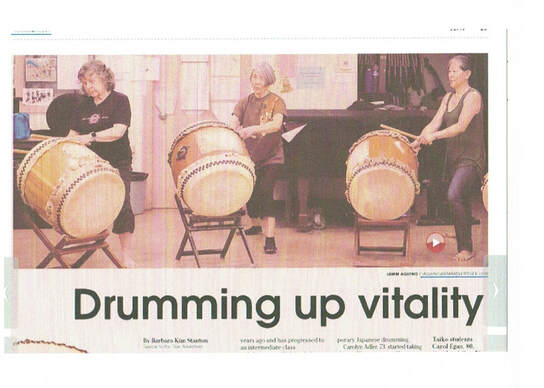
Recently, members of the Class of ’63, appeared in the pages of the Honolulu Star-Advertiser for various reasons. One made the paper in a story featuring her method of maintaining a healthy life-style; another had a picture taken in 1962 in a story celebrating an organization’s 150 years; and another wrote a Letter to the Editor explaining his renewed faith in the Aloha spirit.
BEAT DA DRUM!
The Wednesday, March 27, 2019 edition of the Honolulu Star-Advertiser, contained a story titled Drumming up vitality on page Z23, about taiko drumming featuring different reasons why student engage in this activity. One of the students interviewed was Carolyn (Watanabe) Adler who has been taking taiko lessons for over 20 years. She said "physical fitness, endurance, mental focus and clarity are among the benefits that she has experienced from her taiko. It has become a part of my soul. It has not kept me from getting older, but has definitely helped to keep me fit. It takes me longer to remember routines, but I have always been a slow learner, so I’m happy to have age to blame for my memory lapses.”
The link below takes you to the story that appeared in the paper - https://www.staradvertiser.com/2019/03/27/features/drumming-up-vitality/ and this link takes you to You Tube where you can see Carolyn and her fellow students beating the drum - https://www.youtube.com/watch?v=9G39n34cd8A&feature=youtu.be.
YMCA Celebrates 150 Years in Hawaii
The Sunday, March 31, 2019 issue of the Honolulu Star-Advertiser contained an insert honoring the YMCA and its 150 year history in Hawaii. On page 13 of the insert is a picture taken in 1962 when the YMCA sent representatives to Japan as part of a home and home program. In the picture, Hawaii’s representatives are dancing the hula. If you look in the background of the picture you will see John Takasaki strumming the ukulele.
ALOHA SPIRIT STILL HERE
Stan Naguwa’s daughter had a recent positive experience that moved him so much that he wrote a Letter to the Editor that appeared in the March 31, 2019 edition of the Honolulu Star-Advertiser.
His letter is shown below. Isn’t it wonderful to see positive words in a newspaper.
Stan Naguwa’s daughter had a recent positive experience that moved him so much that he wrote a Letter to the Editor that appeared in the March 31, 2019 edition of the Honolulu Star-Advertiser.
His letter is shown below. Isn’t it wonderful to see positive words in a newspaper.
Test Taken While Student at UHS Could Predict Alzheimer’s
UPDATE: Did you know there were only three schools in the entire state of Hawaii that took part in Project Talent. The three schools were University High School, Baldwin High on Maui, and Leilehua High School on Oahu. A total of 2,705 students from these three schools in Hawaii were part of the 440,000 students in grades 9-12 that were tested as part of Project Talent. An article in the October 8, 2018 edition of the Star Advertiser (http://www.staradvertiser.com/2018/10/08/hawaii-news/project-talent-seeks-clues-to-aging-well-by-tracking-former-hawaii-teens-now-in-their-70s/) describes the project and the on-going follow-up.
Who could know?
A September 21, 2018 newspaper article in the Washington Post newspaper written by Tara Bahrampour, had this headline: “In 1960 about half a million teens took a test. Now it could predict whether they get Alzheimer’s.” Robin Len forwarded the article because she remembered that our class of ’63 was part of the half a million teens who took the test.
At our stage of life a headline like that gets our attention.
Actually, just before our 50th reunion five years ago, we published a story on our class website Kalakoa section (http://uhs63.weebly.com/kalakoa.html) about a follow-up study to the 1960 test that John Chong and Miles Nakashima participated in. That story is reprinted below this story or you can go to the website page.
The September 2018 newspaper article contained the following information.
The entire Washington Post article can be found at this link https://www.washingtonpost.com/local/social-issues/in-1960-about-half-a-million-teens-took-a-test-now-it-could-predict-whether-they-get-alzheimers/2018/09/20/fcbabebe-b864-11e8-a7b5-adaaa5b2a57f_story.html?noredirect=on&utm_term=.31ffbe690428
If you are interested in obtaining your test scores or getting more information about Project Talent, go to this website www.projecttalent.org or contact: Melissa Wentzel, American Institutes for Research, Project Talent @ [email protected], telephone: 202.403.6563.
Who could know?
A September 21, 2018 newspaper article in the Washington Post newspaper written by Tara Bahrampour, had this headline: “In 1960 about half a million teens took a test. Now it could predict whether they get Alzheimer’s.” Robin Len forwarded the article because she remembered that our class of ’63 was part of the half a million teens who took the test.
At our stage of life a headline like that gets our attention.
Actually, just before our 50th reunion five years ago, we published a story on our class website Kalakoa section (http://uhs63.weebly.com/kalakoa.html) about a follow-up study to the 1960 test that John Chong and Miles Nakashima participated in. That story is reprinted below this story or you can go to the website page.
The September 2018 newspaper article contained the following information.
- “In 1960, …… took a test that turned out to be the largest survey of American teenagers ever conducted. It took two and a half days to administer and included 440,000 students from 1,363 public, private, and parochial high schools around the country.”
- “Fifty-eight years later, the answers provided by students on the test are still being used by researchers - most recently in the fight against Alzheimer’s Disease. A study released this month found that subjects who did well on test questions as teenagers had a lower incidence of Alzheimer’s and related dementia in their 60s and 70s than those who scored poorly.”
- “In recent years, researchers have used Project Talent data for follow-up studies, including one published September 7, 2018 in the Journal of the American Medical Association. It compared results for over 85,000 test-takers with their 2012-2013 Medicare claims and expenditures data and found warning signs for dementia may be discernable as early as adolescence.”
- The study looked at how students scored on 17 areas of cognitive ability such as language, abstract reasoning, math, clerical skills, and visual and spatial prowess, and found that people with lower scores as teenagers were more prone to getting Alzheimer’s and related dementias in their 60s and early 70s.”
- “Specifically, those with lower mechanical reasoning and memory for words as teens had a higher likelihood of developing dementia in later life: Men in the lower-scoring half were 17 percent more likely, while women with lower scores were 16 percent more likely. Worse performance on other components of the test also showed increased likelihood of later-life dementia.”
The entire Washington Post article can be found at this link https://www.washingtonpost.com/local/social-issues/in-1960-about-half-a-million-teens-took-a-test-now-it-could-predict-whether-they-get-alzheimers/2018/09/20/fcbabebe-b864-11e8-a7b5-adaaa5b2a57f_story.html?noredirect=on&utm_term=.31ffbe690428
If you are interested in obtaining your test scores or getting more information about Project Talent, go to this website www.projecttalent.org or contact: Melissa Wentzel, American Institutes for Research, Project Talent @ [email protected], telephone: 202.403.6563.
Kalakoa Story - Project Talent
How many of you remember your time as a “lab mouse” while attending UHS? Among the “experiments” we were subjected to was the infamous UICSM and the Stanford-Binet standardized tests. Recently, Ann Reid (Slaby) was contacted by Melissa Wentzel of the American Institutes for Research, Project Talent, so she did what any good corporate citizen would do, she referred the Melissa to someone else - John Chong and Miles Nakashima.
WHAT WAS PROJECT TALENT?
“Fifty-three years ago, the class of 1963 from University High School participated in a national study called Project Talent. The American Institutes for Research, which conducted the original Project Talent tests in 1960, is trying to reconnect with the participants in preparation for a planned follow-up study.”
“In 1960, Project Talent became the largest study of high school students ever conducted in the United States. Over 400,000 students from 1,300 socially, economically, culturally, and racially diverse schools across the country participated in a national survey of their aptitudes and abilities in mathematics, reasoning, and language, and shared their aspirations for the future.”
“Project Talent is the only large scale, nationally representative study that tracks participants from childhood to retirement age. This enables researchers to study how experiences, abilities, interests, and personality types demonstrated early in life impact the physical, social, and economic wellbeing of individuals as they age.”
WHAT DID THEY WANT?
“I (Melissa Wentzel) recently spoke with one of your classmates, and she explained that you are both planning the upcoming 50th reunion for the class of 1963. Over the past three years, Project Talent has successfully reconnected with thousands of original Project Talent participants from the classes of 1960-62 through their high school reunions. We have found that reunion organizers often have the most up-to-date information about their former classmates, such as who is deceased, which women have changed their names, and where everyone is now living. Would it be possible for you to share that information with me?”
John and I DID NOT provide the requested information because we did not have your permission to do so.
WHAT WE DID:
We each contacted the American Institute to determine what was involved in the follow-up study. We were told there would be a series of questions to answer and that we could receive our scores from the 1960 test if we desired. The questions primarily concerned what has happened in our lives since taking the test - did we graduate from high school; college; highest level of completed education; type of work we did after college; how satisfied we are with our lives, questions about our health, etc. All of the questions were answered on-line and took about 10 minutes to complete.
TEST SCORES:
Receipt of our 1960 scores took about four weeks to arrive. Test scores were intended to measure three areas: 1) student’s overall academic potential (e.g., vocabulary and arithmetic); 2) knowledge the student had acquired both in and outside of school (e.g., social studies and home economics); 3) student’s innate capabilities (e.g., memory skills).
The scores were in nineteen areas such as Vocabulary, Social Studies, Spelling, English, Math, Mechanical Reasoning, etc. Each score shows how a student performed in relation to their peers across the country. Additionally, students were asked to select from a list of 36 occupations, the occupation they would prefer and from the same list, the occupation they expected to enter.
WHAT IT ALL MEANS TO:
John Chong: “Test results would indicate that I was supposed to be a rocket scientist. Very interesting results if you look at yourself compared to the 440,000 others. UHS taught us the stuff we needed to know to score well in the tests.”
Miles Nakashima: “I could spell, but couldn’t write. How could I visualize how a diagram would look after being turned around on a flat surface but not how it would look after being folded into a 3-D figure?”
If you are interested in obtaining your test scores or getting more information about Project Talent, go to this website www.projecttalent.org or contact: Melissa Wentzel, American Institutes for Research, Project Talent @ [email protected], telephone: 202.403.6563.
Input provided by Project Talent, Ann Reid (Slaby), John Chong, Miles Nakashima
WHAT WAS PROJECT TALENT?
“Fifty-three years ago, the class of 1963 from University High School participated in a national study called Project Talent. The American Institutes for Research, which conducted the original Project Talent tests in 1960, is trying to reconnect with the participants in preparation for a planned follow-up study.”
“In 1960, Project Talent became the largest study of high school students ever conducted in the United States. Over 400,000 students from 1,300 socially, economically, culturally, and racially diverse schools across the country participated in a national survey of their aptitudes and abilities in mathematics, reasoning, and language, and shared their aspirations for the future.”
“Project Talent is the only large scale, nationally representative study that tracks participants from childhood to retirement age. This enables researchers to study how experiences, abilities, interests, and personality types demonstrated early in life impact the physical, social, and economic wellbeing of individuals as they age.”
WHAT DID THEY WANT?
“I (Melissa Wentzel) recently spoke with one of your classmates, and she explained that you are both planning the upcoming 50th reunion for the class of 1963. Over the past three years, Project Talent has successfully reconnected with thousands of original Project Talent participants from the classes of 1960-62 through their high school reunions. We have found that reunion organizers often have the most up-to-date information about their former classmates, such as who is deceased, which women have changed their names, and where everyone is now living. Would it be possible for you to share that information with me?”
John and I DID NOT provide the requested information because we did not have your permission to do so.
WHAT WE DID:
We each contacted the American Institute to determine what was involved in the follow-up study. We were told there would be a series of questions to answer and that we could receive our scores from the 1960 test if we desired. The questions primarily concerned what has happened in our lives since taking the test - did we graduate from high school; college; highest level of completed education; type of work we did after college; how satisfied we are with our lives, questions about our health, etc. All of the questions were answered on-line and took about 10 minutes to complete.
TEST SCORES:
Receipt of our 1960 scores took about four weeks to arrive. Test scores were intended to measure three areas: 1) student’s overall academic potential (e.g., vocabulary and arithmetic); 2) knowledge the student had acquired both in and outside of school (e.g., social studies and home economics); 3) student’s innate capabilities (e.g., memory skills).
The scores were in nineteen areas such as Vocabulary, Social Studies, Spelling, English, Math, Mechanical Reasoning, etc. Each score shows how a student performed in relation to their peers across the country. Additionally, students were asked to select from a list of 36 occupations, the occupation they would prefer and from the same list, the occupation they expected to enter.
WHAT IT ALL MEANS TO:
John Chong: “Test results would indicate that I was supposed to be a rocket scientist. Very interesting results if you look at yourself compared to the 440,000 others. UHS taught us the stuff we needed to know to score well in the tests.”
Miles Nakashima: “I could spell, but couldn’t write. How could I visualize how a diagram would look after being turned around on a flat surface but not how it would look after being folded into a 3-D figure?”
If you are interested in obtaining your test scores or getting more information about Project Talent, go to this website www.projecttalent.org or contact: Melissa Wentzel, American Institutes for Research, Project Talent @ [email protected], telephone: 202.403.6563.
Input provided by Project Talent, Ann Reid (Slaby), John Chong, Miles Nakashima
The Energizer Bunny of UHS
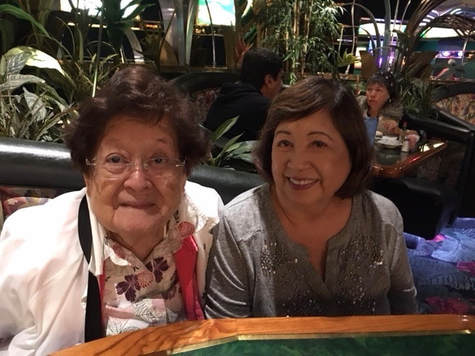
Guess who Sueann ran into at the Fremont Hotel in Vegas recently? None other than our Honorary Class Member, Miss Kunioka! She will be 96 years old in September and told Sueann "the key to living long is to eat fruits, vegetables and fish at least once a day and to do a lot of walking."
We should all look as good at 96!
We should all look as good at 96!
Guess Who?
We recently heard from a classmate that we knew as a talented musician who played the trumpet. As can be seen from early pictures, he was one of the “original” students who started at the Laboratory School during his elementary years.
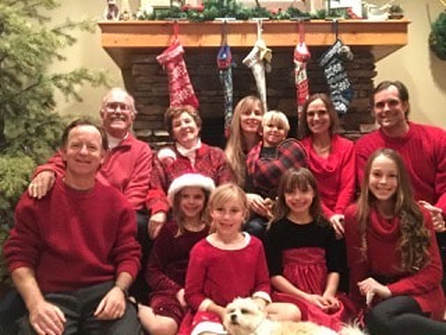
Of course we’re speaking about Jimmy Vine. This is a recent picture (December 2016) of Jimmy and his family during the holidays.
Front row: Jim’s son, Tag, and his family
Second row: Jim and Sue Vine; daughter Katy and her family from Austin, TX
Location: Tag Vine’s home in Whitefish Montana
Front row: Jim’s son, Tag, and his family
Second row: Jim and Sue Vine; daughter Katy and her family from Austin, TX
Location: Tag Vine’s home in Whitefish Montana
2017 ULS Golf Tournament
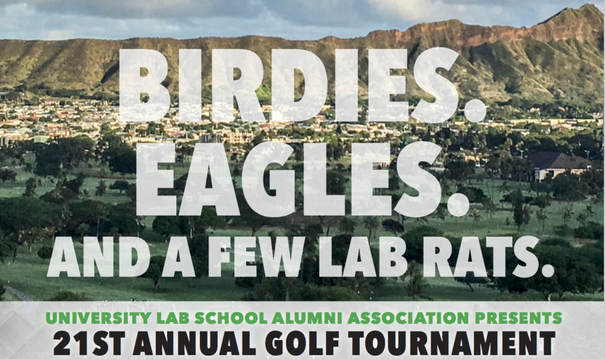
The Class of '63 was well represented at the recent ULS Golf Tournament on Friday, July 7, 2017 at the Ala Wai Golf course by Clay Ching, John Chong, Howard Yoshiura, Vernon Kajikawa, Dennis Sugihara, and Dianne Sugihara ('64).
Results from Vernon:
"There were 36 teams entered and here are the “net” scores for each time and the team’s standing:
• A Team (Clay, JC, and Howie): net score (after deducting the handicap) = 61.8 Standing among the 36 teams: #23
• Dream Team (Dianne, SQTs & Vern): net score 67.2 Standing among the 36 teams: #35
The top team came in with a net score of something like 48.7 (they probably did well on one of those “side” games where the team could deduct 10 strokes). Neva mind, it was a fun day and the Dream Team relied heavily on Dianne's power drives and accurate putting (I’m guessing she drained about 8 one-putts for the Dream Team!). It was a gorgeous day with lots laughter, cheering and lots of sunshine! JC was “DA Man” on the backside, sore back and all! His accuracy accounted for the birdie barrage in the back nine for the A Team. Hope more classmates can join us next year! "
And a quote from John Chong:
"Make no mistake, it was a TEAM game....
It took me a good 4 holes to even have a playable ball and when I yanked one behind a tree, into the drainage ditch etc. Howie or the Admiral made a shot that we could play.
No real pressure....one guy seemed to always make a shot to keep us on even keel."
Results from Vernon:
"There were 36 teams entered and here are the “net” scores for each time and the team’s standing:
• A Team (Clay, JC, and Howie): net score (after deducting the handicap) = 61.8 Standing among the 36 teams: #23
• Dream Team (Dianne, SQTs & Vern): net score 67.2 Standing among the 36 teams: #35
The top team came in with a net score of something like 48.7 (they probably did well on one of those “side” games where the team could deduct 10 strokes). Neva mind, it was a fun day and the Dream Team relied heavily on Dianne's power drives and accurate putting (I’m guessing she drained about 8 one-putts for the Dream Team!). It was a gorgeous day with lots laughter, cheering and lots of sunshine! JC was “DA Man” on the backside, sore back and all! His accuracy accounted for the birdie barrage in the back nine for the A Team. Hope more classmates can join us next year! "
And a quote from John Chong:
"Make no mistake, it was a TEAM game....
It took me a good 4 holes to even have a playable ball and when I yanked one behind a tree, into the drainage ditch etc. Howie or the Admiral made a shot that we could play.
No real pressure....one guy seemed to always make a shot to keep us on even keel."
How Big Was It?
Fishermen like to exaggerate about what they catch. Today with the advent of cameras everywhere, they can offer irrefutable proof of their fish story. Some classmates just can’t be happy fishing in the Pacific —they have to travel to other places in the world.
Frank Yap had to go to South Florida and fish in a drainage canal close to the property line (7-8 feet away) and look at what he caught! He said the lobster weighed 297.6 ounces (use your UICSM background) to figure how many pounds of succulent lobster he got. That makes a lot of lobster rolls and bisque.
Here are some responses to the questions of how big and how old the lobster caught by Frank:
From "Feesh" Murakami: "Can't determine its gender since I can't see its swimmerets. The female has large ones compared to the male. This is so the female can cradle/protect the eggs. This is the same with Hawaiian spiny lobsters in trying to determine its gender. Since my dad told me to let the females go, I had to make sure the lobsters I kept had the small swimmerets. Lived in Connecticut so we ate alot of this type of lobster that we bought from the piers.
Using my UICSM calculater, it's 18.6 lbs. Big bambucha by any standard!
As for the age, I think you'd have to find and count its growth rings. Learned this from a lobster farmer on the Big Island where he was growing them for Hawaii's market. Met the owner and he explained the whole process. He said his water was being brought up from 2,000 feet off the Kona coast. It was ice cold.
The lobster's "rings" are right by the eye and another set somewhere near the digestive tract. Same idea as the "rings" of a tree, but only less visible. Remember the guy saying you'll need a microscope to see these "rings". He never went that far as determining the age. All he cared about was the weight he took to market.
Told Frank I use to buy "chicks" which were young lobsters for a $1 each when in Connecticut half a century ago. He then told me the cost of lobsters on the east coast today. I better go find my net to catch my own.
You can be proud of that lobster. "
From Miles Nakashima: " I remember reading somewhere that an educated guess as to determining age of a lobster is to use the following: it takes approximately 7 years for a lobster to reach 1 pound and after that it will grow 1 pound for every three years. Your way of counting growth rings sounds more scientific."
From Linda Mae Onomoto: As usual, it was “Moor” who cut right to the chase when she said "t was bamboocha pounds. It was as old as the hills."
Frank Yap had to go to South Florida and fish in a drainage canal close to the property line (7-8 feet away) and look at what he caught! He said the lobster weighed 297.6 ounces (use your UICSM background) to figure how many pounds of succulent lobster he got. That makes a lot of lobster rolls and bisque.
Here are some responses to the questions of how big and how old the lobster caught by Frank:
From "Feesh" Murakami: "Can't determine its gender since I can't see its swimmerets. The female has large ones compared to the male. This is so the female can cradle/protect the eggs. This is the same with Hawaiian spiny lobsters in trying to determine its gender. Since my dad told me to let the females go, I had to make sure the lobsters I kept had the small swimmerets. Lived in Connecticut so we ate alot of this type of lobster that we bought from the piers.
Using my UICSM calculater, it's 18.6 lbs. Big bambucha by any standard!
As for the age, I think you'd have to find and count its growth rings. Learned this from a lobster farmer on the Big Island where he was growing them for Hawaii's market. Met the owner and he explained the whole process. He said his water was being brought up from 2,000 feet off the Kona coast. It was ice cold.
The lobster's "rings" are right by the eye and another set somewhere near the digestive tract. Same idea as the "rings" of a tree, but only less visible. Remember the guy saying you'll need a microscope to see these "rings". He never went that far as determining the age. All he cared about was the weight he took to market.
Told Frank I use to buy "chicks" which were young lobsters for a $1 each when in Connecticut half a century ago. He then told me the cost of lobsters on the east coast today. I better go find my net to catch my own.
You can be proud of that lobster. "
From Miles Nakashima: " I remember reading somewhere that an educated guess as to determining age of a lobster is to use the following: it takes approximately 7 years for a lobster to reach 1 pound and after that it will grow 1 pound for every three years. Your way of counting growth rings sounds more scientific."
From Linda Mae Onomoto: As usual, it was “Moor” who cut right to the chase when she said "t was bamboocha pounds. It was as old as the hills."
Frank then said: "Wowza. What an amazing amount of info has been shared generated by one pix and two short questions. So for this week's treat, answer the questions about the fish (caught in the same canal as the lobster) shown below: What type of bass is this - a 'peacock bass'? Or simply diseased?
Cherry Blossoms in Tokyo
Some people go to Washington D.C. to see the cherry blossoms each spring. Clay Ching recently traveled to Tokyo to see the real thing! These pictures were taken at the Asakusa Shrine and Ueno Park in April 2017. Clay said "the weather was nearly perfect - maybe a little on the windy side - cool but not uncomfortable. Hard to believe that these are all REAL flowers! They seem so artificial."
Number 1 Hawaii Public High School
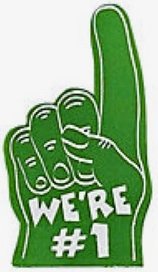
In the twilight of our lives, good news is welcomed at any time. And when that news is about someone or something close to our lives, that makes the news all the better. Well, we can be the people jumping and shouting with our hands held high and finger signifying we’re Number 1 among all public high schools in Hawaii according to the April 2017 issue of Honolulu Magazine.
The magazine rated fifty-five public high schools in the state on eight different categories such as Math, Reading, Science, Math Growth, Reading Growth, ACT scores, Graduation Rate, and College Placement Rate to provide a total score. Our alma mater had the highest total score of 293.4 points while the lowest score of the fifty-fifth school was 116.1 based on a maximum score of 400 points. A description of each category and the methodology used for the assessment is described on pages 46-53 of the article.
The top five public high schools cited in the article are:
We’ve always had pride in our high school and this type of achievement makes our support and initiatives such as our “Strive-for-Twenty-Five” fund drive all the more satisfying.
The magazine rated fifty-five public high schools in the state on eight different categories such as Math, Reading, Science, Math Growth, Reading Growth, ACT scores, Graduation Rate, and College Placement Rate to provide a total score. Our alma mater had the highest total score of 293.4 points while the lowest score of the fifty-fifth school was 116.1 based on a maximum score of 400 points. A description of each category and the methodology used for the assessment is described on pages 46-53 of the article.
The top five public high schools cited in the article are:
- University Laboratory
- Roosevelt High
- Kalani High
- ‘Ehunuikaimalino
- Kaiser High
We’ve always had pride in our high school and this type of achievement makes our support and initiatives such as our “Strive-for-Twenty-Five” fund drive all the more satisfying.
Janie & Fay: 1965 ROTC Sponsors
(photo courtesy of John Lee)
Good Vibrations: A University High Dinner Event for the ‘60s Classes
Barbara, Sandra, Fay, Carolyn, Jade, Dennis, Ricky, Vernon, and Linda Mae, represented the Class of ’63 on Sunday, September 18, 2016 at a dinner event sponsored by the University Laboratory School Foundation held at the Multi-Purpose Building on the school campus.
Good Vibrations: A University High Dinner Event for the ‘60s Classes, was for all alumni who graduated in the 1960’s (1960-1969) to give them an opportunity to reconnect with classmates, to learn about current happenings and to tour the school. Pictures from ULS photographers are at this link.
Approximately seventy-five attendees from the ‘60s classes were in attendance at the dinner on Sunday. Based on a quick observation, our class had the most alumni of the ’60’s classes present with nine attendees.
A similar event is being contemplated next year to honor the ’70’s alumni.
Ms. Kunioka, was also present at the dinner as she is always is at functions sponsored by the school. As the designated “honorary” member of the Class of ’63, Ms. Kunioka sat our class table. The assembled alumni sang Happy Birthday to Ms. Kunioka as she celebrated her 94th birthday. She is sharp as ever and remembers the names of everyone.
Approximately seventy-five attendees from the ‘60s classes were in attendance at the dinner on Sunday. Based on a quick observation, our class had the most alumni of the ’60’s classes present with nine attendees.
A similar event is being contemplated next year to honor the ’70’s alumni.
Ms. Kunioka, was also present at the dinner as she is always is at functions sponsored by the school. As the designated “honorary” member of the Class of ’63, Ms. Kunioka sat our class table. The assembled alumni sang Happy Birthday to Ms. Kunioka as she celebrated her 94th birthday. She is sharp as ever and remembers the names of everyone.
Seated: Ms. Kunioka; unknown; Fay; Sandra
Standing: Sharlene Chun (Milton Yee’s sister); Ricky; Vernon; Jade; Linda Mae; Barbara; Carolyn, Dennis
BTW, we heard that our favorite “pinkish-colored” desks with the lift-tops that we used during our tenure, have been removed as part of the school’s modernization project. They were still in use when we visited the school during our 50th reunion in 2013.
It is good to know there are some constants in life as Linda Mae discovered during the Sunday dinner. We have it on good authority from Linda Mae (it’s rumored she was locked in the boy’s bathroom while in high school and released only to bump into Cheong Lum when she emerged) that the green tiles with white grout in the bathrooms HAVE NOT changed since we attended UHS!
And now we know why Linda Mae was locked in the boy’s bathroom. She was hiding there to smoke a cigarette provided by Jerry Park and several of her “friends” held the door closed to prevent her from exiting. When they released their hold on the door, she emerged in a cloud of smoke and just happened to bump into Dr. Inn, the School Principal, and not Cheong Lum.
First came the removal of our iconic baseball backstop and now our lift-top desks. All vestiges of our school days are slowly being removed. As “we have more yesterdays than tomorrows, we tend to care more about our children and grandchildren,” (Bill Clinton) - perhaps we should think about a way to create a remembrance of our presence while we were students at UHS.
Standing: Sharlene Chun (Milton Yee’s sister); Ricky; Vernon; Jade; Linda Mae; Barbara; Carolyn, Dennis
BTW, we heard that our favorite “pinkish-colored” desks with the lift-tops that we used during our tenure, have been removed as part of the school’s modernization project. They were still in use when we visited the school during our 50th reunion in 2013.
It is good to know there are some constants in life as Linda Mae discovered during the Sunday dinner. We have it on good authority from Linda Mae (it’s rumored she was locked in the boy’s bathroom while in high school and released only to bump into Cheong Lum when she emerged) that the green tiles with white grout in the bathrooms HAVE NOT changed since we attended UHS!
And now we know why Linda Mae was locked in the boy’s bathroom. She was hiding there to smoke a cigarette provided by Jerry Park and several of her “friends” held the door closed to prevent her from exiting. When they released their hold on the door, she emerged in a cloud of smoke and just happened to bump into Dr. Inn, the School Principal, and not Cheong Lum.
First came the removal of our iconic baseball backstop and now our lift-top desks. All vestiges of our school days are slowly being removed. As “we have more yesterdays than tomorrows, we tend to care more about our children and grandchildren,” (Bill Clinton) - perhaps we should think about a way to create a remembrance of our presence while we were students at UHS.
Gone Fishing
Growing up in the Islands, surrounded by the ocean, having easy access to the water, and eating fish as a regular part of our diet, one would think “gone fishing” would have been a huge part of our lives during our youth. Living in Hawaii gave us the opportunity to engage in many different types of fishing - spear fishing with our home-made spear-guns with surgical tubing; using long bamboo poles to fish from the rocks; throwing nets; and when we could afford it later in our lives, deep sea fishing.
An informal survey of classmates revealed, that not very many of us were passionate fishermen during our high school years. You could probably count them on one hand - Stephen Murakami (AKA “Feesh” because of his passion), Bill Beppu, Ricky AuHoy, John Takasaki, and Stan Naguwa.
I suspect that others became more interested in fishing later in our lives as time and circumstances permitted. For instance, Miles Nakashima became enamored with fishing for large mouth bass when he was stationed in Georgia. If you were to ask fishermen you know, why they fish, you would find a variety of answers without any dominant reason.
Here is what Feesh Murakami said about why he goes fishing:
“I love to eat sea food. All types of fish, lobster, tako, crab, shrimp, etc.
I noticed from the start that being at the beach or in the water, it was really relaxing and everything else was forgotten. Diving took me to another world where it was beautiful and an experience most people didn't have in those days. Night diving with John Takasaki was at Sandy Beach and Waikiki Beach for uhu, kumu, mullet, kala and lobster. If you saw two guys on a motocycle with the back guy holding a bag and two spears, that would be us. It didn't matter whether I caught something or not, but bringing something home to eat was a bonus.
The challenge of catching a particular type of fish was there. From catching a marlin to a small akule (halalu), lobster (diving/net), tako (diving/bottom) and kona crabs/shrimp. “
Miles said he likes to fish because of the quest to catch the biggest fish he could. He quit fishing for bass when he caught a six-pound large mouth bass because that was the largest he ever caught and he quit fishing altogether when he caught a small marlin weighing several hundred pounds. He fishes sparingly today but his appetite gets whetted when Ricky AuHoy sends him pictures and videos of his catch.
Ricky recently caught the largest fish he’s ever caught in fifty-years of fishing when he caught a five pound Paopao (Golden Ulua) using 10-pound test on a 6-1/2 foot spinning rod.
An informal survey of classmates revealed, that not very many of us were passionate fishermen during our high school years. You could probably count them on one hand - Stephen Murakami (AKA “Feesh” because of his passion), Bill Beppu, Ricky AuHoy, John Takasaki, and Stan Naguwa.
I suspect that others became more interested in fishing later in our lives as time and circumstances permitted. For instance, Miles Nakashima became enamored with fishing for large mouth bass when he was stationed in Georgia. If you were to ask fishermen you know, why they fish, you would find a variety of answers without any dominant reason.
Here is what Feesh Murakami said about why he goes fishing:
“I love to eat sea food. All types of fish, lobster, tako, crab, shrimp, etc.
I noticed from the start that being at the beach or in the water, it was really relaxing and everything else was forgotten. Diving took me to another world where it was beautiful and an experience most people didn't have in those days. Night diving with John Takasaki was at Sandy Beach and Waikiki Beach for uhu, kumu, mullet, kala and lobster. If you saw two guys on a motocycle with the back guy holding a bag and two spears, that would be us. It didn't matter whether I caught something or not, but bringing something home to eat was a bonus.
The challenge of catching a particular type of fish was there. From catching a marlin to a small akule (halalu), lobster (diving/net), tako (diving/bottom) and kona crabs/shrimp. “
Miles said he likes to fish because of the quest to catch the biggest fish he could. He quit fishing for bass when he caught a six-pound large mouth bass because that was the largest he ever caught and he quit fishing altogether when he caught a small marlin weighing several hundred pounds. He fishes sparingly today but his appetite gets whetted when Ricky AuHoy sends him pictures and videos of his catch.
Ricky recently caught the largest fish he’s ever caught in fifty-years of fishing when he caught a five pound Paopao (Golden Ulua) using 10-pound test on a 6-1/2 foot spinning rod.
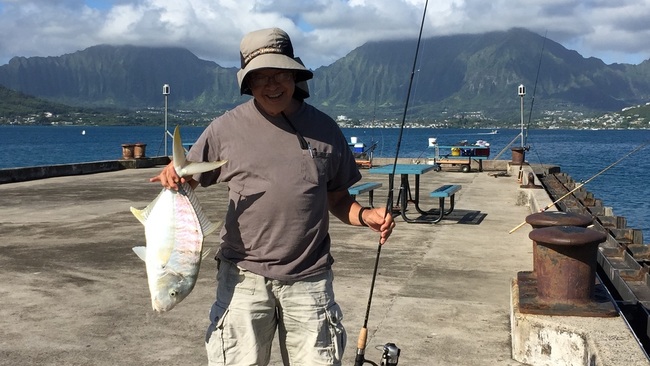
Marine Corps Base Hawaii Fishing Pier
August 2016
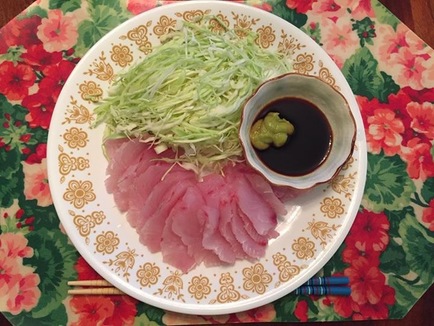
One of the benefits of fishing is eating what you catch
One of four servings prepared from Ricky’s catch.
One of four servings prepared from Ricky’s catch.
Some other comments from Feesh:
Age started fishing? “My dad had a photo of me in the water and he said I was five years old when he noticed I loved everything in and around the water.
What type of fishing do I like? Every type, from deep sea trolling/bottom fishing, shore casting/whipping, diving, lay and throw net. Also really liked fishing the north west for salmon, ling cod and shellfish. Loved Idaho where trout fishing was great. Wahiawa Resevoir is great for peacock bass (one trip had 40+ medaka for bait and we hooked up 40+ times) and Nuuanu Resevoir for catfish (one trip caught 50+ but kept only 2).
Biggest fish caught? Marlin for sure that we didn't weigh, except for tournaments where we had to weigh the fish. Two that we weighed were 300+ and 200+ lbs. One not weighed the skipper estimated it at 900+ lbs.
Favorite place to fish? First, has to be outside of my house. Except for the deep sea fish, every type of fish, crab/lobster, tako and shrimp was caught there. It was a matter of my dad asking me to catch a particular fish or lobster for dinner. The other places were the whole Waianae coast, Ewa beach, Wahiawa Resevoir, Nuuanu Resevoir, Sandy beach, Waimanalo/Kailua, Kaawa, Kahana Bay, Hauula, Laie, Waimea Bay, Haleiwa and lately Mokuleia/Kaena Pt.
Favorite fish story? There are thousands of stories to be told. The best ones were when I went with my dad, uncle and sons.
Not doing as much fishing as I'd like to now days, but when I do, it's great.”
Jan Naguwa says Stan is the fisherman in the family and proudly says “we’ve never had to pay for fish because Stan catches all they eat.”
Bill Beppu shared the following:
Here is a picture from 1979-that is my oldest child, Lori, who just turned 38. Fish are summer steelhead from the Toutle River the year before Mt. St. Helens blew. That fishery was gone for many years but has actually been making a comeback in the past few years. I don't fish that often, but when visiting Lori usually go out with her husband to wade from shore for striped bass on eastern Long Island between Southampton and Montauk. Out here I usually wade rivers to fish for steelhead and salmon, occasionally go on a boat trip with friends. I am still working so anticipate perhaps more fishing will happen upon retiring!
Age started fishing? “My dad had a photo of me in the water and he said I was five years old when he noticed I loved everything in and around the water.
What type of fishing do I like? Every type, from deep sea trolling/bottom fishing, shore casting/whipping, diving, lay and throw net. Also really liked fishing the north west for salmon, ling cod and shellfish. Loved Idaho where trout fishing was great. Wahiawa Resevoir is great for peacock bass (one trip had 40+ medaka for bait and we hooked up 40+ times) and Nuuanu Resevoir for catfish (one trip caught 50+ but kept only 2).
Biggest fish caught? Marlin for sure that we didn't weigh, except for tournaments where we had to weigh the fish. Two that we weighed were 300+ and 200+ lbs. One not weighed the skipper estimated it at 900+ lbs.
Favorite place to fish? First, has to be outside of my house. Except for the deep sea fish, every type of fish, crab/lobster, tako and shrimp was caught there. It was a matter of my dad asking me to catch a particular fish or lobster for dinner. The other places were the whole Waianae coast, Ewa beach, Wahiawa Resevoir, Nuuanu Resevoir, Sandy beach, Waimanalo/Kailua, Kaawa, Kahana Bay, Hauula, Laie, Waimea Bay, Haleiwa and lately Mokuleia/Kaena Pt.
Favorite fish story? There are thousands of stories to be told. The best ones were when I went with my dad, uncle and sons.
Not doing as much fishing as I'd like to now days, but when I do, it's great.”
Jan Naguwa says Stan is the fisherman in the family and proudly says “we’ve never had to pay for fish because Stan catches all they eat.”
Bill Beppu shared the following:
Here is a picture from 1979-that is my oldest child, Lori, who just turned 38. Fish are summer steelhead from the Toutle River the year before Mt. St. Helens blew. That fishery was gone for many years but has actually been making a comeback in the past few years. I don't fish that often, but when visiting Lori usually go out with her husband to wade from shore for striped bass on eastern Long Island between Southampton and Montauk. Out here I usually wade rivers to fish for steelhead and salmon, occasionally go on a boat trip with friends. I am still working so anticipate perhaps more fishing will happen upon retiring!
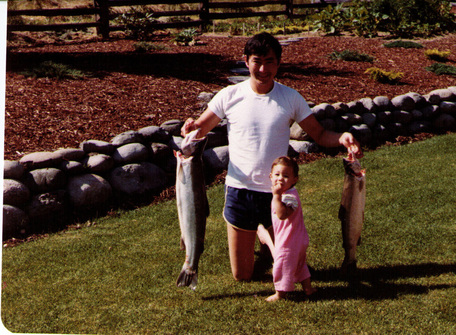
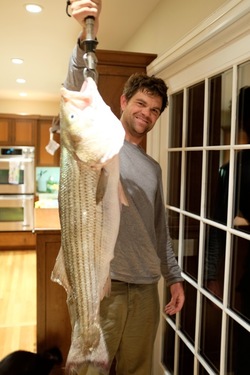
Bill Beppu’s son-in-law with striped bass caught on the East Coast in the eastern Long Island, Southampton to Montauk area.
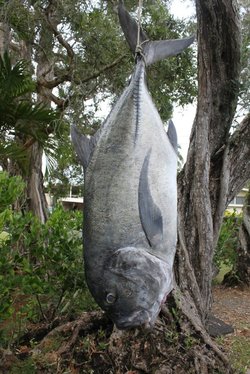
Ulua caught off of Kailua Beach by one of Bill Beppu's friends while fishing from a kayak.
Perhaps Henry David Thoreau said it best when he said: Many men go fishing all of their lives without knowing that it is not fish they are after.
Fishing related anecdote from Linda Mae:
"Late one night, maybe around 10:30pm, this car pulls up in front of my dad's driveway. When I went out to see who it was, I could vaguely make out (you gotta remember, the memory is not so sharp) that Bill Irvine was driving(?). I think, in the front seat with Bill was John Takasaki and (???). In the back seat, looking pretty beat up and bleeding a little, was Dennis Saiki and (???). The story was that John Takasaki took the boys to Allen Davis (past Sandy Beach) for some "night diving". If you are familiar with the coastline around there, it's pretty rocky, and the waves tend to dash into the rocks. Hence, the beat-up look. I think they may have been lucky to get out in one piece."
Perhaps Dennis Saiki can add more to this nocturnal adventure?
Fishing related anecdote from Linda Mae:
"Late one night, maybe around 10:30pm, this car pulls up in front of my dad's driveway. When I went out to see who it was, I could vaguely make out (you gotta remember, the memory is not so sharp) that Bill Irvine was driving(?). I think, in the front seat with Bill was John Takasaki and (???). In the back seat, looking pretty beat up and bleeding a little, was Dennis Saiki and (???). The story was that John Takasaki took the boys to Allen Davis (past Sandy Beach) for some "night diving". If you are familiar with the coastline around there, it's pretty rocky, and the waves tend to dash into the rocks. Hence, the beat-up look. I think they may have been lucky to get out in one piece."
Perhaps Dennis Saiki can add more to this nocturnal adventure?
ULS Benefit Golf Tournament
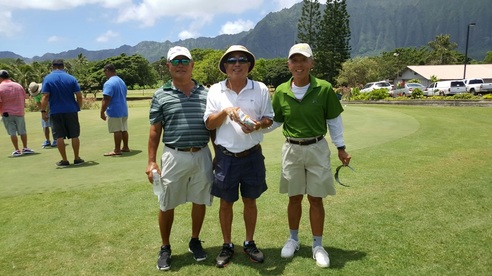
The class of ’63 was represented by a trio of golfers at the University Lab School (ULS) Annual Golf Tourney at the Olomana Golf Course on July 7, 2016. Vern, Howie, and Walt were part of the one-hundred plus golfers who participated in the tournament. Vern said “we were undoubtedly the oldest team” participating in the tourney but Donald Hosaka (Class of ’54) was the oldest alumn who participated in the tournament.
Vern, Waller, Howie before teeing off
Vern, Waller, Howie before teeing off
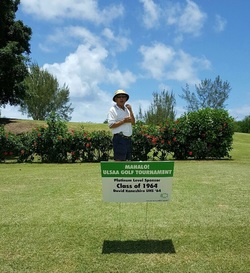
Waller at the first tee
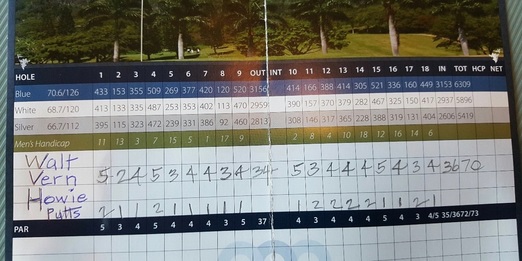
Vern's scorecard
How did our team fare in the tourney? According to Howie, “we scrambled
collectively to a 2 under par round of 70, with 11 one-putts to either save
par, or score a birdie. With only 3 birdies & 1 bogie, this group of old
farts were good for only a "thank you for participating" award!! In other
words, nothing but a little goodie bag with some chips & golf tees thrown
in.
But was lots of fun as we golfed with 2 young(mid-40's) studs grad from
Iolani, and the uncle of on of the guys. One of the Iolani boys(Kevin) is
the owner of a restaurant Nabeiya Maido here in town. The other guy(James)
was a dentist in Kailua, and his uncle(Dean) was retired. We had more fun
talking story with them, than paying attention to golf, as Waller was sick
battling a cold, and coughed and complained his way thru 18 holes!!”
We were always competitive while in school and that spirit hasn’t been lost. Vern said “I just reread the application and it states that the team’s handicap is 10% of the team’s cumulative handicap. I turned in the following: slugs - 22; howie - 21; waller - 19. So since we shot 70, and deducting our 6.2 handicap, our net should have been 63.8. I’ll see if I can find out if we were in the top half of the scores. Stay tuned!”
STILL GETTING TOGETHER
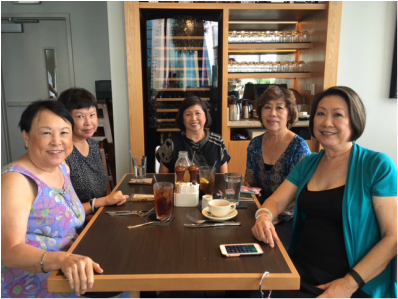 Clockwise: Bernice, Evie, Robin, Sue Ann, Darlene
Clockwise: Bernice, Evie, Robin, Sue Ann, Darlene
Meeting for lunch at Nordstrom's in April 2016
CELEBRATE IN LAS VEGAS!
Did you have friends who graduated from Farrington, Kaimuki, Kalani, McKinley, Mid-Pacific Institute, and Roosevelt in 1963?
Join them in Las Vegas on September 23-24, 2016 for the 2016 Multi-School Reunion. Go to this website www.alohalasvegas-classof63.com for information about the event.
Join them in Las Vegas on September 23-24, 2016 for the 2016 Multi-School Reunion. Go to this website www.alohalasvegas-classof63.com for information about the event.
OKONOMIYAKI EXPERT
At the urging of a friend, Sue Ann Lau participated in an okonomiyaki class at Whole Foods Market in Kahala in March 2016. Flipping the large Japanese pancake is the challenge in making okonomiyaki. After her experience, Sue Ann says get a larger spatula to flip the pancake or make smaller pancakes.
Read the entire article at http://www.staradvertiser.com/features/oh-what-a-pancake-the-fine-art-of-okonomiyaki/
Read the entire article at http://www.staradvertiser.com/features/oh-what-a-pancake-the-fine-art-of-okonomiyaki/
'LIVING IN THE EYE OF THE STORM"
Peter Adler, husband of Carolyn (Watanabe), was recently featured in the Star Advertiser article, Peter Adler: Conflict mediator’s high-profile projects keep him busy.
Read the entire article from the April 8, 2016 issue at http://www.staradvertiser.com/?s=PETER+ADLER
Read the entire article from the April 8, 2016 issue at http://www.staradvertiser.com/?s=PETER+ADLER
CLASS OF '63 REUNION SURVEY RESULTS
Results of the survey conducted in March 2016 to gather information to assist in future planning for class functions have been compiled and are contained at this link.
The survey consisted of nine questions and covered the following areas:
The survey was sent to 57 classmates (those whose email address was available); 49 classmates received the survey and 55 percent (27) submitted survey responses.
Survey highlights:
Many thanks to those who completed the survey.
The survey consisted of nine questions and covered the following areas:
- Should we have the next planned event in 2018 (55th year after graduation) or 2020 (75th birthday for most classmates)?
- What time of the year should the event be held?
- How many day(s) should the event cover?
- Type of activities
- Cost
- Where should the event(s) be held?
The survey was sent to 57 classmates (those whose email address was available); 49 classmates received the survey and 55 percent (27) submitted survey responses.
Survey highlights:
- 34% said we should celebrate BOTH in 2018 and 2020 - one classmate said at this stage of our lives we needed to seize the day!
- 68% said the event should be held in the July - December time frame.
- 50% said the event should be two days in length
- Comments indicated more time was needed for socializing versus a planned program at the group events.
Many thanks to those who completed the survey.
